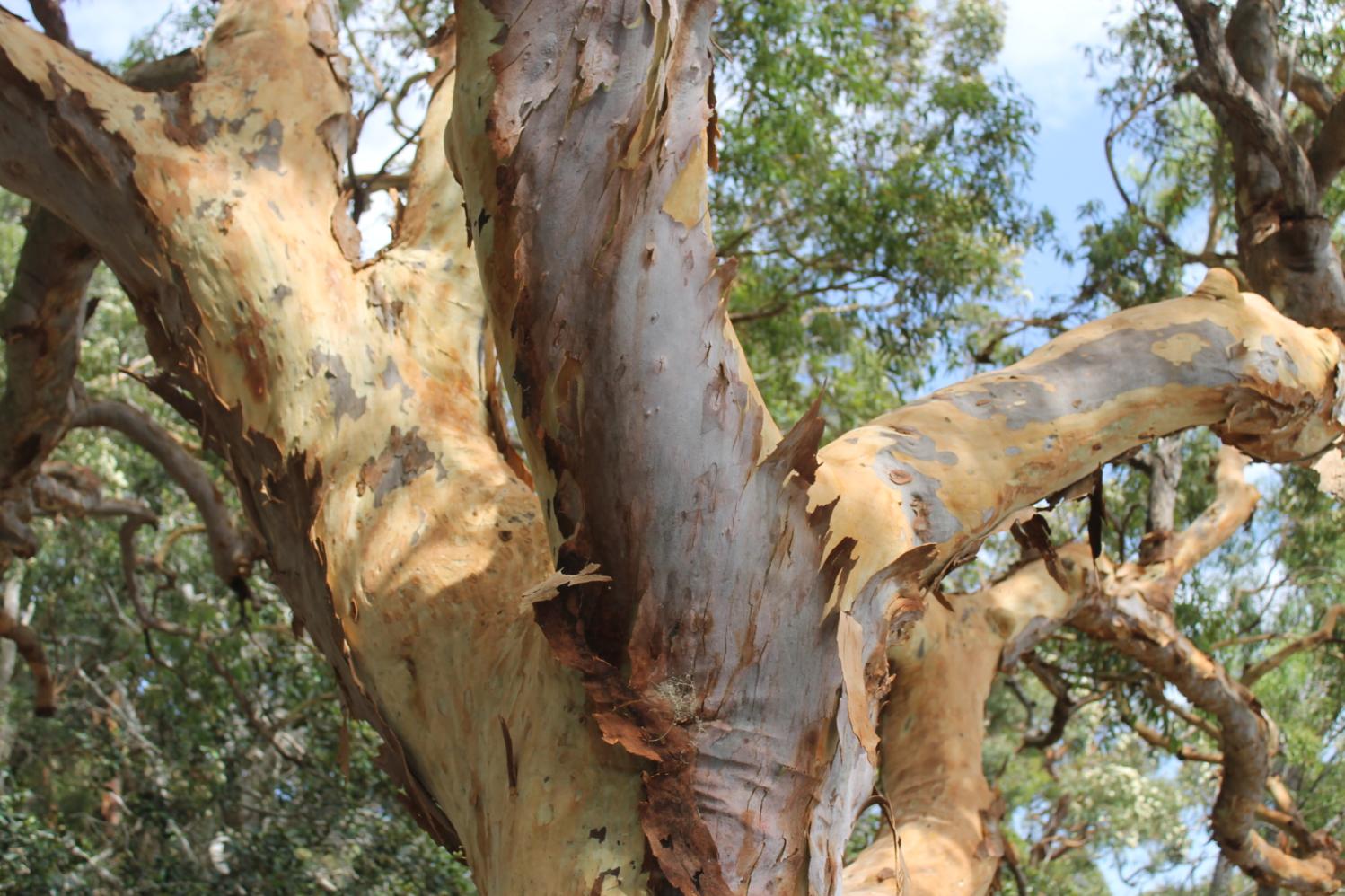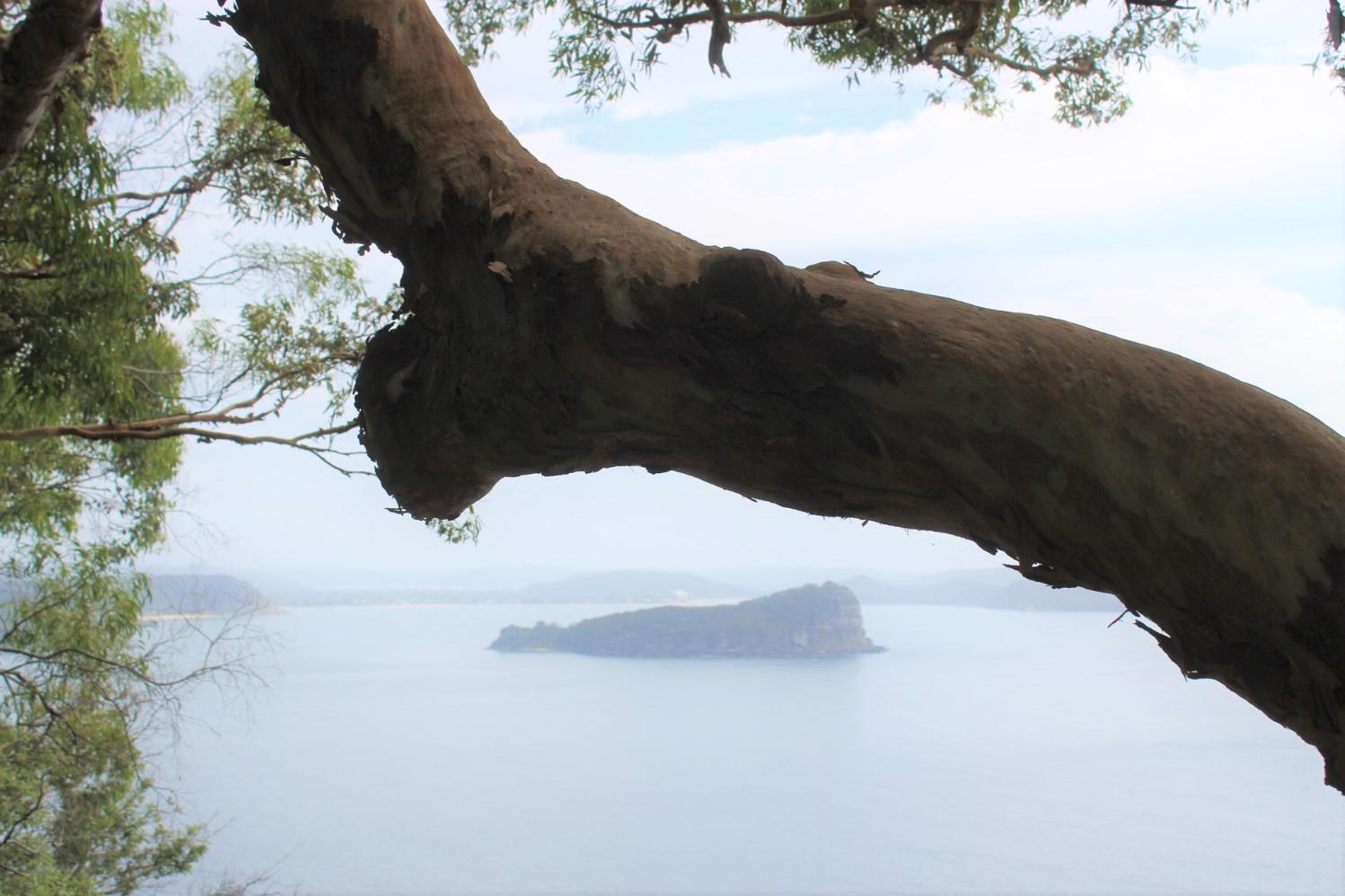Ella McFadyen's Love Of Pittwater: Children's Champion
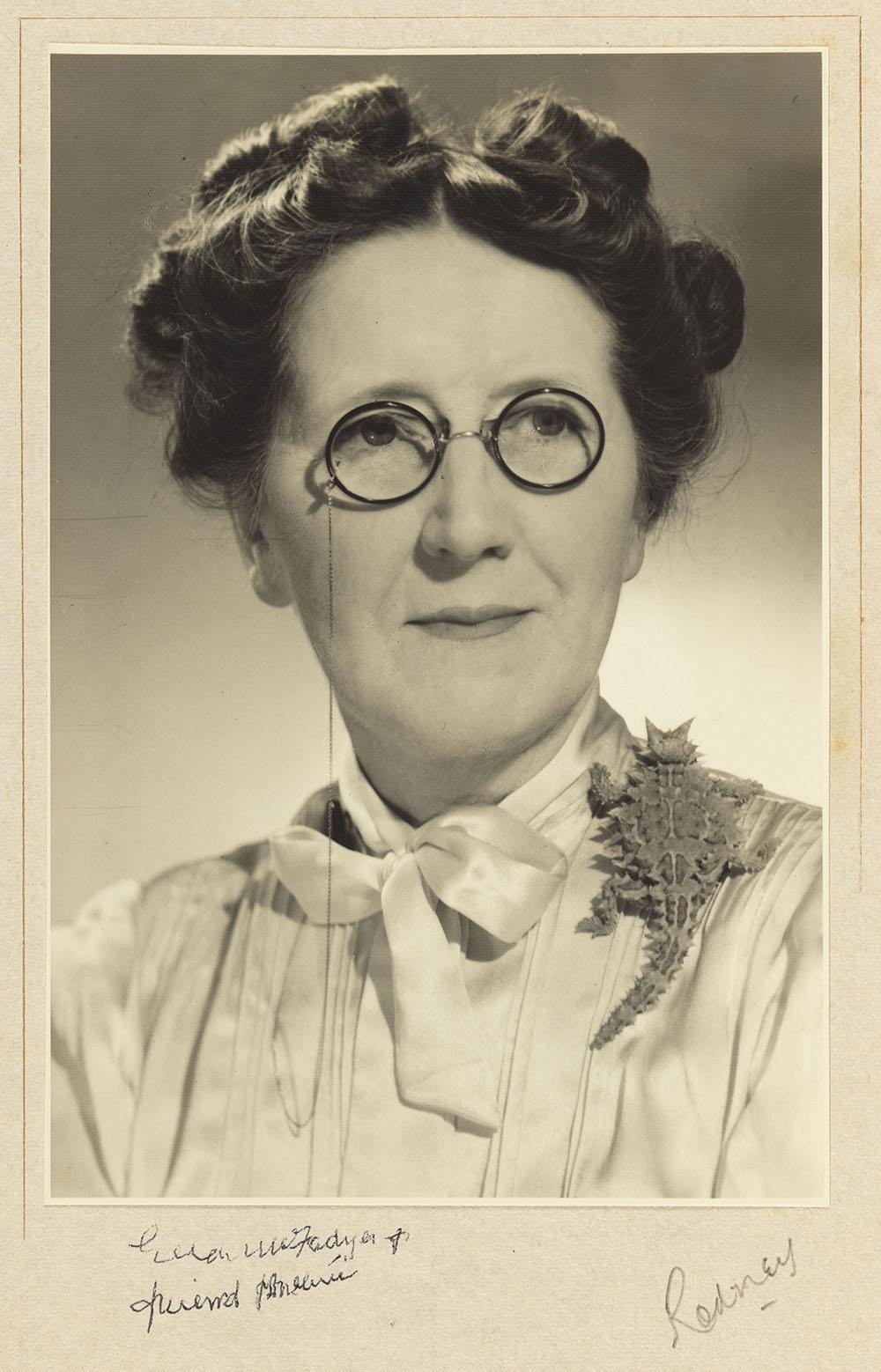
Ella McFadyen, 1940's, photo courtesy State Library of New South Wales
Ella McFadyen (1887-1976) was a journalist, editor, writer of books for children, poet and amateur photographer with a passion for the environment (and inspiring youngsters to be amongst this through forming the Boomerang Walking Clubs), a deep love for animals, and sharing insights about the natural world with children. She conducted the Children’s Page of an old weekly journal, the Sydney Mail (as “Cinderella”) until that publication finished in 1938 and also wrote for the Sydney Morning Herald Women’s Thursday section, Australian Town and Country Journal and many other newspapers and magazines.
Her love of the great outdoors and Australia's wildlife, and sharing that with children, features in just about everything she did and wrote, while her passion for photography captured scenes and animals of here we may not recognise in some cases. Ella's words paid numerous tributes to our environment and bore witness to seeing the little things as much as the great landmarks that have not changed much since she first visited. Her responses to her child and young adult readers spoke of the peninsula and shared tidbits of information on everything from the flowers to the Seasons and weather and what can be found where.
Ella May McFadyen was born a second generation 'Australian' (or third generation if you take into account her mum was born here) on November 26th, 1887 at 'Burrundulla', John-street, Stanmore. Stanmore then was green with paddocks and trees. Ella was one of five girls and two boys born to Donald and Mary McFadyen. Soon afterwards the family moved to 'Airlie' in Garfield street, Five Dock. The suburb of Five Dock was named, apparently, 'from the fact of there being five natural inlets or docks on the western bank' - or there were. The earliest documented reference to Five Dock is in the Sydney Gazette, February 3, 1805. In 1806, Governor King granted this bay to surgeon John Harris, who named it 'Five Dock Farm', and this comprised the entire bay, including the current-day suburbs of Five Dock, Abbotsford, Drummoyne, Chiswick, Russell Lea and Rodd Point.
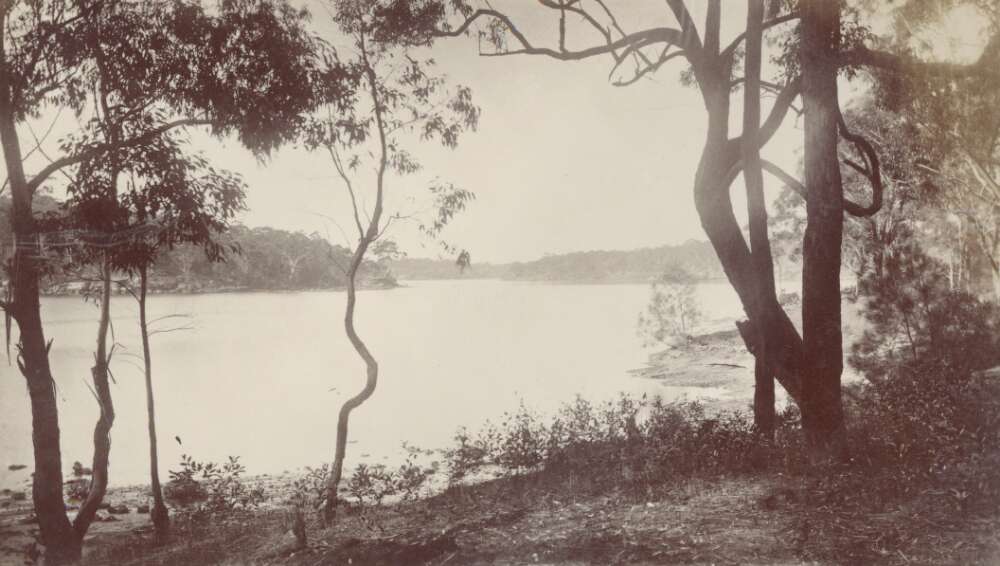
(1880). Parramatta River, Five Dock, Port Jackson, New South Wales, ca. 1880 Retrieved from http://nla.gov.au/nla.obj-140536671
The farm was eventually sold and broken up into smaller parcels of 30 to 60 acres and, being so close to town, began to be developed. By the 1890's, when the McFadyen family lived there, a tramway system had been installed making this area popular among those who had families who they wanted to have space, fresh air and paddocks to play in, but whose dad had to catch a tram to town to work.
While the family lived in Five Dock her two brothers were born as was another sister, while her youngest sister was born at Point Clare, Brisbane Water, in 1904, when the family moved there for a short time. So Ella was already looking across the water to Pittwater, to Barrenjoey and Lion Island and West Head years before her stories and poems about here appeared where people may read them.
Ella's father was the son of John McFadyen who was born on the Isle of Coll, Argyll, Scotland in 1829 as had her great grandfather, Roderick, in 1801 and her great great grandfather Donald McFadyen in about 1773. In a 1972 interview Ella states that her grandfather spoke Gaelic and he and his wife, Margery (nee McPherson), would speak this in the house when they didn't want the children to know what they were speaking of.
Roderick McFadyen and his family came to New South Wales in 1856 as things weren't too good on the Isle of Coll and those living there were encouraged to emigrate to places such as Australia and Canada. John McFadyen was already 26 when he arrived here and took up farming with his brothers and sisters at Morpeth on the NSW Mid North Coast. Donald McFadyen was born at Morpeth on July 31st, 1863.
On her mother's side there was a strong Irish influence, her grandfather on her maternal side, was Thomas Wilson (1814 to 1871) while her great grandfather was a Tim Kelly who came to Australia aboard the ship, 'Isabella Watson' with the 99th regiment.
Her father bought a paddock at Five Dock which Ella described as then being a green place 'with just a few pegs to tell you where the new streets were to be'. Her childhood at Five Dock is described as having pets - including a pet wallaby!, horses, a vegetable garden and a swimming pool. Her love of drawing animals both from nature and at the Museum filled her days.
Her father's firm was one of the first to use electric lights and he told stories about using electric lighting to speed up the construction of the Garden Palace, which burnt down soon after. Her father also told stories of the Hunter River including rescuing a drowning cow and sustaining it on the second floor of the house, until the water subsided. Her father liked horses but not gambling. Her mother disliked horses and forbade the children to go near them.
Ella was home schooled by her Mother despite the old Five Dock Public School being just across from the McFadyen 'paddock'. She learned Latin and grammar and although ruminated over having mother as teacher credited her sound sense and use of 'Gardiner's analysis' as providing her with the correct use of words and as words became her career, of seven decades in length as a poet, wordsmith, story teller and editor, her mother did very well indeed. Ella remembers reading Shakespeare's 'Hamlet' when aged 10!
alike those on the Isle of Coll, Ella did not attend school but ‘instead finding companionship in her dolls and the books her father scattered thoughtfully around the family home. In a sign of what was to come, she often spent her time reading, sketching birds at the local museum, looking through old diaries and notebooks, and pretending to publish newspapers…..’ [2.]
When Ella was almost 16 her mother fell in love with Brisbane Water - just across from Barrenjoey Headland, during a visit there during Autumn. It was at Brisbane Water that Ella's passion for writing prose and rhymes, previously created for her younger siblings, began to be shared with others.
While living there she visited places along the waters in a little skiff and on one adventure found the stone in which Australian poet Henry Kendall had carved his name. Ella climbed a tree and took a photo of this using her little box camera and it was published in the Sydney Mail years before she joined that paper to run the two page Children's Page - known as 'Cinderella's Page' to generations of children and young adults. That little story and Henry Kendall rock photo taken by Ella:
KENDALL'S GLEN.
BY ELLA McFADYEN.
We left the road where it swerves upward through the orchards to Penang, and soon the mangroves aud ti-trees and wind-rustled swamp grass were left behind, and the bracken bristled up from the white sand track, all dimpled with the little hollows of the ant-lion.
The track leads down to the stone-paved ford, but we turned off past the old house beneath whose roof Kendall must many times have slept. Convict-built, of solid stone, and some 70 years old, it nestles among its grey orchard trees, and the sunlight draws warm tones from its weather-stained shingles and mellow-tinted stones.
Beyond Narara Creek our climb began up the rugged grey face of the range, till, breathless and weary, we halted upon a green tableland starred with flannel daisies and red Christmas bells, while from the slopes below us the coveted pink tops of the Christmas bush beckoned. Presently we came upon a little loitering stream, sunken under the sand here and there, only to reappear a few paces further on tumbling in a mimic cascade into little pools where the crayfish crawl and the dragonflies hover. Before us stretched a splendid panorama.
The stream led us to the abrupt, lichen-spotted lip of a rock-faced gully that dropped sheer at our feet. Over it the water leapt into music-haunted shadow, and the wind beat back on us a fine-spun veil of spray. A detour led us down steeply to the rocky floor of the gully till we stood beneath the fall—
that Silver singer far away
By folded hills and hoar.
Close by is the rough grey boulder with the clearly-cut inscription, 'H. KENDALL, 1874,' and below the letters 'G.L.F.'
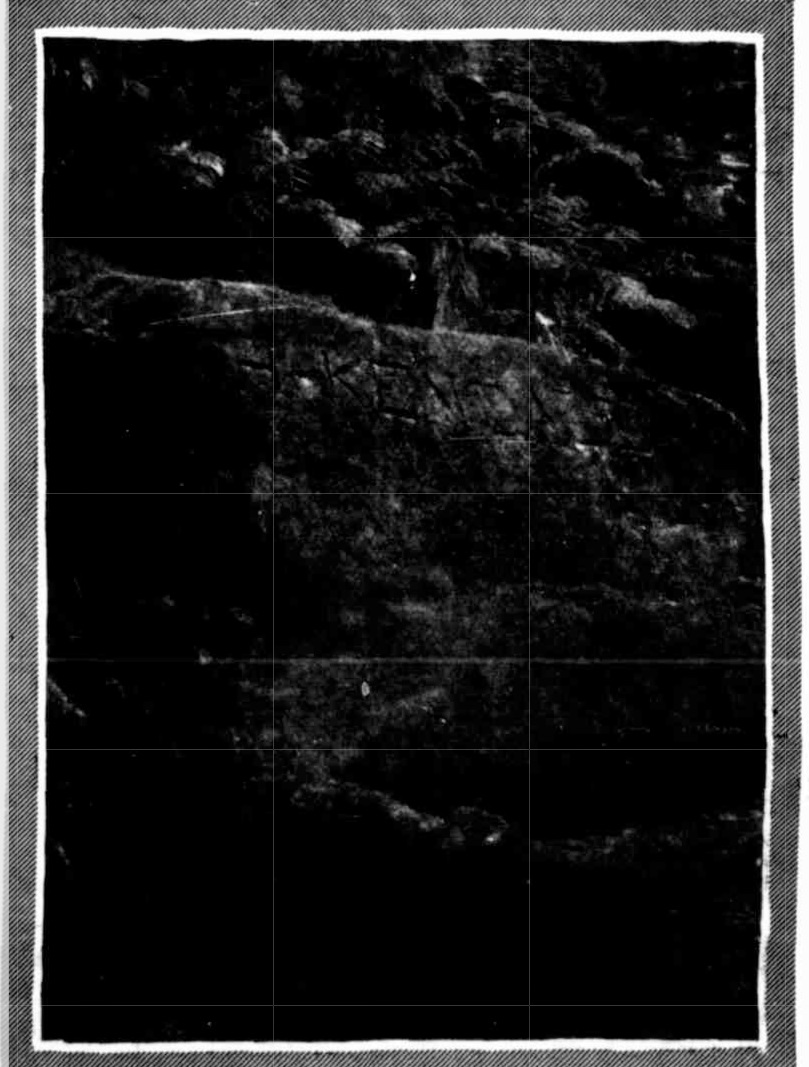
Standing in that remote and hidden sanctuary, with the written music of the poet blending in one's ears with the voice of the water dripping down the moss-boarded ledges, one might well indulge the hope that as it has lain undesecrated these 35 years past, so may it lie aloof and ever sacred from the hands of that old vandal — Change.
I wonder if the leaves that screen
The rock-pool of the past
Are still as soft and cool and green As when we saw them last-!
I wonder if that tender thing.
The moss, has overgrown
The letters by the limpid stream —
Our names upon a stone !
KENDALL'S GLEN. (1909, May 5). The Sydney Mail and New South Wales Advertiser (NSW : 1871 - 1912), p. 29. Retrieved from http://nla.gov.au/nla.news-article164294203
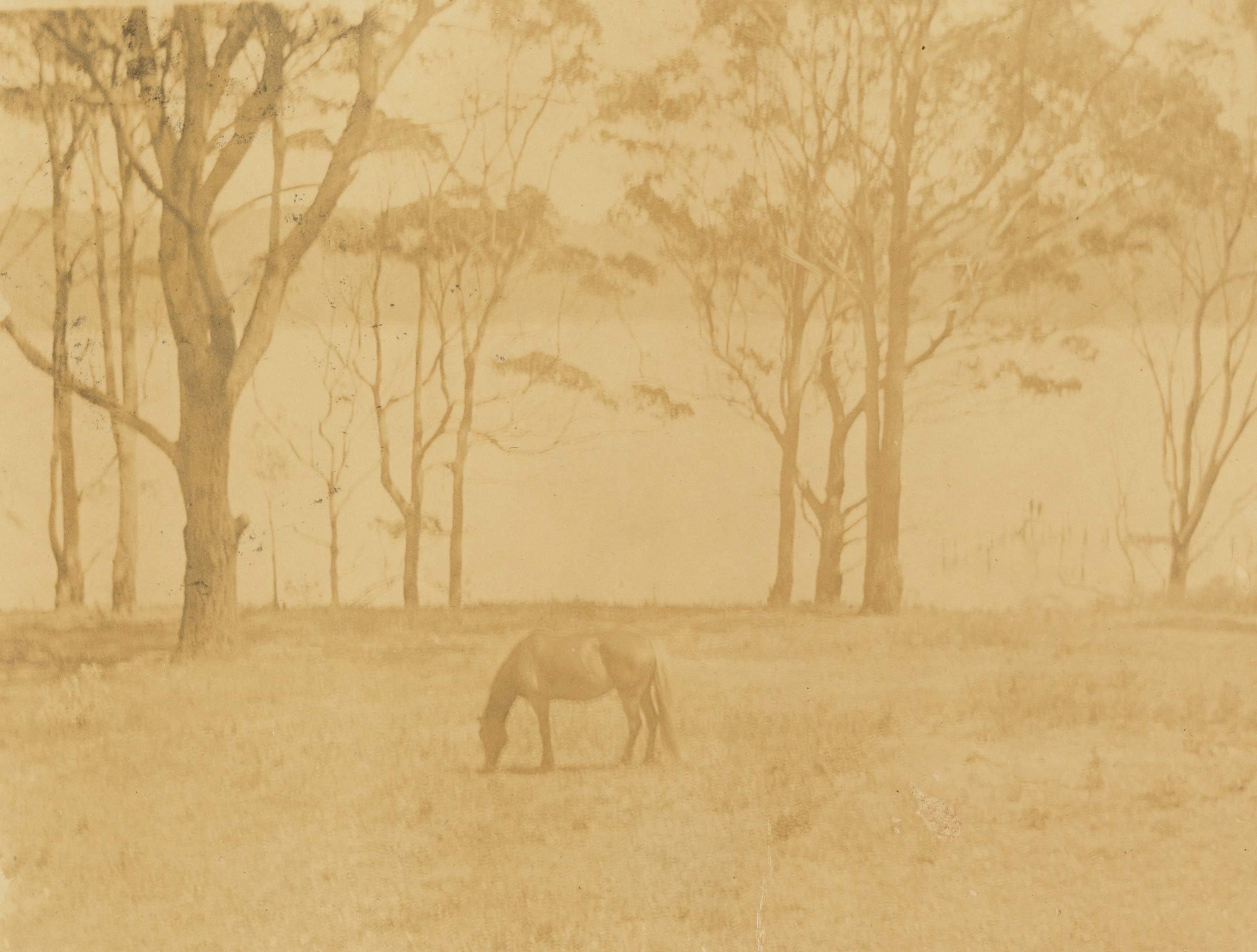
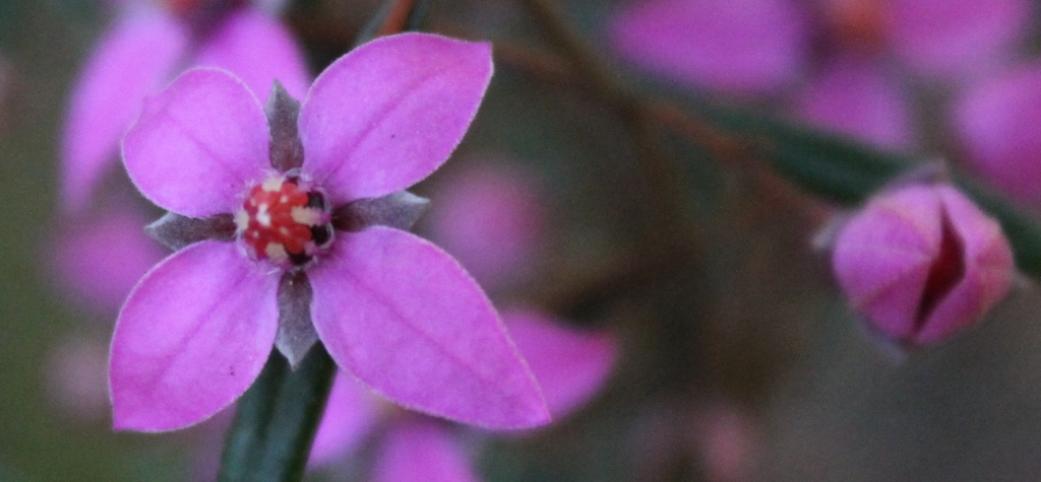
Boronia ledifolia - Sydney Boronia
Fairies
THE CHILDREN'S PAGE.
Conducted by ELLA McFADYEN.
Boys and GIRLS — all you young Australians who are going to be one big family of friends, as we come together each week in reading this Page of ours — what did you think of the Editor's ideas last week? If I know anything about boys and girls — and, really, I ought! — I think you were delighted with the idea of a Page of our very own where we can have discussions and stories and letters and all sorts of jolly com-petitions. Do you remember in the 'Jungle Book' (and I know that lots of you have read it, because it is some times given as a school prize) all the wild creatures of the jungle met together at the Council Rock, and made their plans? Lots of fun they had on those moonlit nights, and interesting gatherings there must have been. But I think that if we held a council together, for all the boys and girls, big and little, we would have things almost as wonderful to relate.
BUSH LORE.
FOR instance, I have a very warm spot in my heart for the boy who loves Nature-lore. A big boy was telling me the other day about the tricks the lyre birds play, and, as they have played a few on me, I was keen on hearing. This boy had been down wild, remote Moonee Creek, where the poet Kendall used to wander, and he told me how the lyre-birds there mimic every-thing in the bush, and how one led him out of his way by imitating the delicious gurgle of a little stream over stones. Onward and downward he went through the tangled timber, thirstily picturing that cool water to himself, only to find at last the lyre-bird having a little concert all on his own, and no stream there at all!
IDEAS AND DYNAMITE.
BUT, of course, there are boys who prefer motor-bikes, or stamps, or engineering. Or perhaps one of you is an inventor. I once knew a boy who had an idea for running an engine with dynamite; but I am glad to say he never got further than drawing plans. Even if the first inventions are not successes, it will be nice to hear all about them and to exchange ideas, be-cause all the world's great inventors were once little boys, and all the best ideas were once just notions be-ginning to grow in some child's mind. I would like this page to be a sort of Hobby Club, where we can talk about such things, and where you can write and ask questions.
WHAT GIRLS CAN DO.
BUT what about the girls? I have a letter here from a girl who is very earnest in wanting to be a poetess. And I am not going to give her that tiresome old piece of advice, 'Don't!' because, even if she never becomes a great writer, her verses will help her to appreciate the beauty and happiness of life. Besides, plenty of successful writers began just as she is beginning. All the good ideas must have a little beginning somewhere, you know. There is a saying that 'in the heart of every man a poet has died young.' I don't see why our poets should be allowed to die, nor our artists, inventors, or explorers. I think that with a little help we could keep the good ideas alive and give them a chance to develop as the boys and girls get older.
FUN AT SCHOOL.
I DARESAY you all love dressing up, and most of you would like to act in a play. Some school-girls wanted to give a play for the Red Cross, and their trouble was that they had only the shabby school-room to act in and the old forms and presses for scenery. That did look like a difficulty, didn't it? But if you have read the adventures of Nicholas Nickleby you will remember that, the first time he had to write a play, he was asked to write it around a pump and some tubs that his friends had bought cheap. So he wrote a play with a great Pump Scene, and it was a huge success. The girls and I decided we could do as well as Nicho-las, so we wrote a school-play to suit the furniture, only to make it attractive we had school-girls of the day when curls and crinolines were worn. One girl was the school marm with snow-white hair, and the rest were her pupils.
Did you girls in the sheep country know that the curly locks of Lincoln wool, all washed and combed and stitched to a little close-fitting cap, will make the love-liest white wig for an old lady? Well, just try it if you get the chance. It was a great play, and there was a little mechanical mouse that slipped out suddenly and made great fun by sending all the girls scuttling on to the forms. We even had an epilogue, which is a kind of complimentary speech, spoken in verse. Everyone wanted the play repeated; but the point of it all is that the girls did all this them-selves, with just the least little bit of help. It is wo-derful what you can all do if you will let yourselves believe you can. And so that you may all tell me what you are doing we will institute straight away
CINDERELLA'S POST-BAG.
CINDERELLA is my 'really truly' name when I have letters written to me, and you all know Cinderella, the girl who wasn't the least afraid of rats and lizards, and who had such wonderful luck in raising pumpkins. Who has a letter to drop into my post-bag this week?
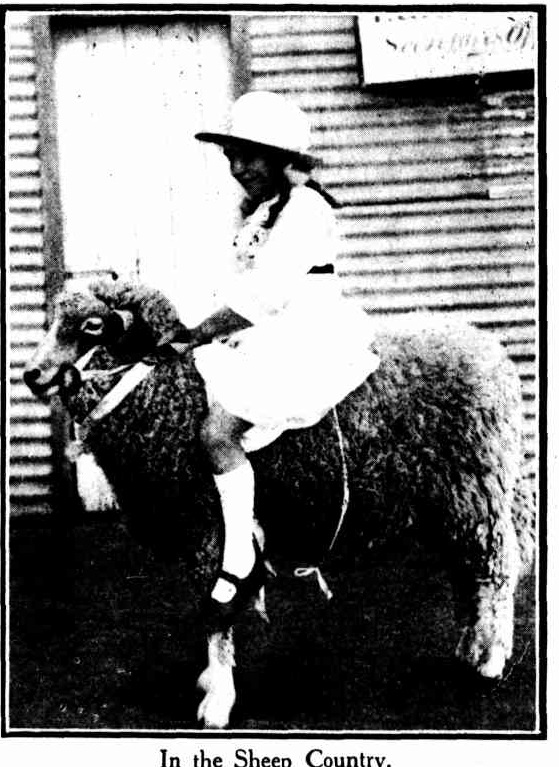
In the Sheep Country. This little girl, who lives in the Henty district, N.S.W., rode about the ground at the last Henty show on her pet lamb. She has two other lambs broken to saddle and harness.
OUR COMPETITIONS.
THE competition for girls is: 'MY FAVOURITE LESSON AT SCHOOL.' There is a Junior section, up to 12 years, and a Senior section, up to 17 years. A Certificate of Merit will be awarded for the best answer in each section. Write about 100 words. The competition for boys is : 'THE BEST HOLIDAY I EVER HAD.'' There is a Junior section, up to 12 years, and a Senior section, up to 17. A Certificate will be awarded for the best answer in each section. Write about 100 words. Note that the closing date for both competitions is FEBRUARY 4th. Send your name, address, and age with your letters. THE CHILDREN'S PAGE. (1920, January 14). Sydney Mail (NSW : 1912 - 1938), p. 27. Retrieved from http://nla.gov.au/nla.news-article159028090
From this first speaking to her Readers Ella is 'Cinderella' when they are sending letters to her. The Children's Page was also a place where Pen Pals were matched to each other, by 'Cinderella' many of these corresponding into adulthood with each other as well as with 'Cinderella'. Children living in the country then, as now, could sometimes feel a bit along, and isolated, so having a friend to write to was a great way to talk about what they were feeling or thinking or dreaming of doing to someone their own age.
Now, Faeries play a prominent and very important role in Scottish and Irish folklore, from the time that every waterway, well and loch had a name, and an ancient faerie that looked after or 'spoke' for it. Even people with strong religious beliefs embraced the notion of fairies, kelpies, and brownies in centuries past. Scottish fairy lore is rich with descriptions of these creatures and their habits.
“When the first baby laughed for the first time, its laugh broke into a thousand pieces, and they all went skipping about, and that was the beginning of fairies.” - Sir J. M. Barrie, Scottish journalist, writer, and dramatist (1860-1937)
“Fairies use flowers for their charactery.” - William Shakespeare, English dramatist and poet (1564-1616)
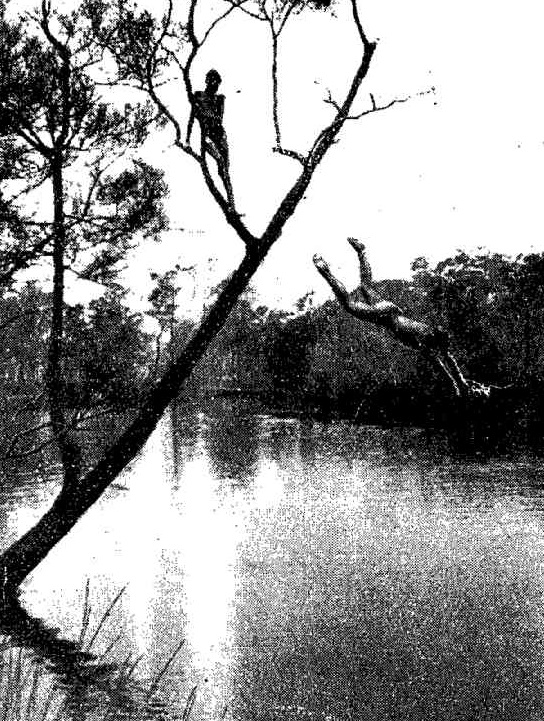
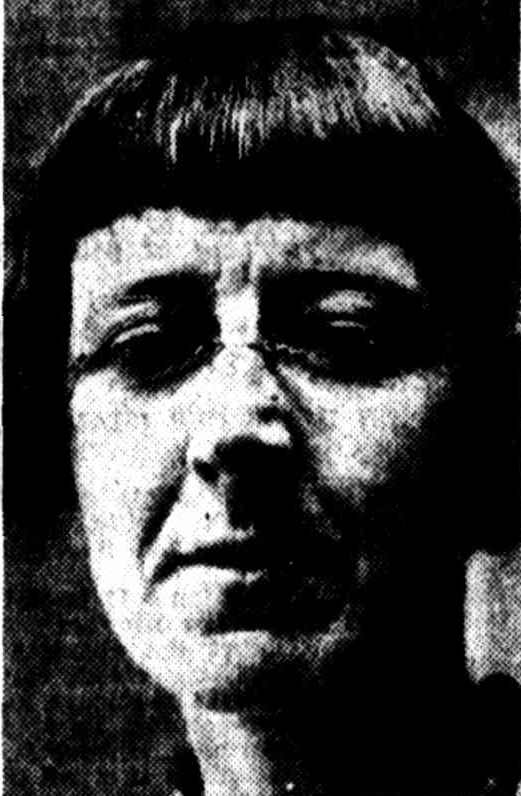
One of the etchings of Pittwater James Squire Morgan completed during the 1920's - I wonder if it's the one Ella loved?::
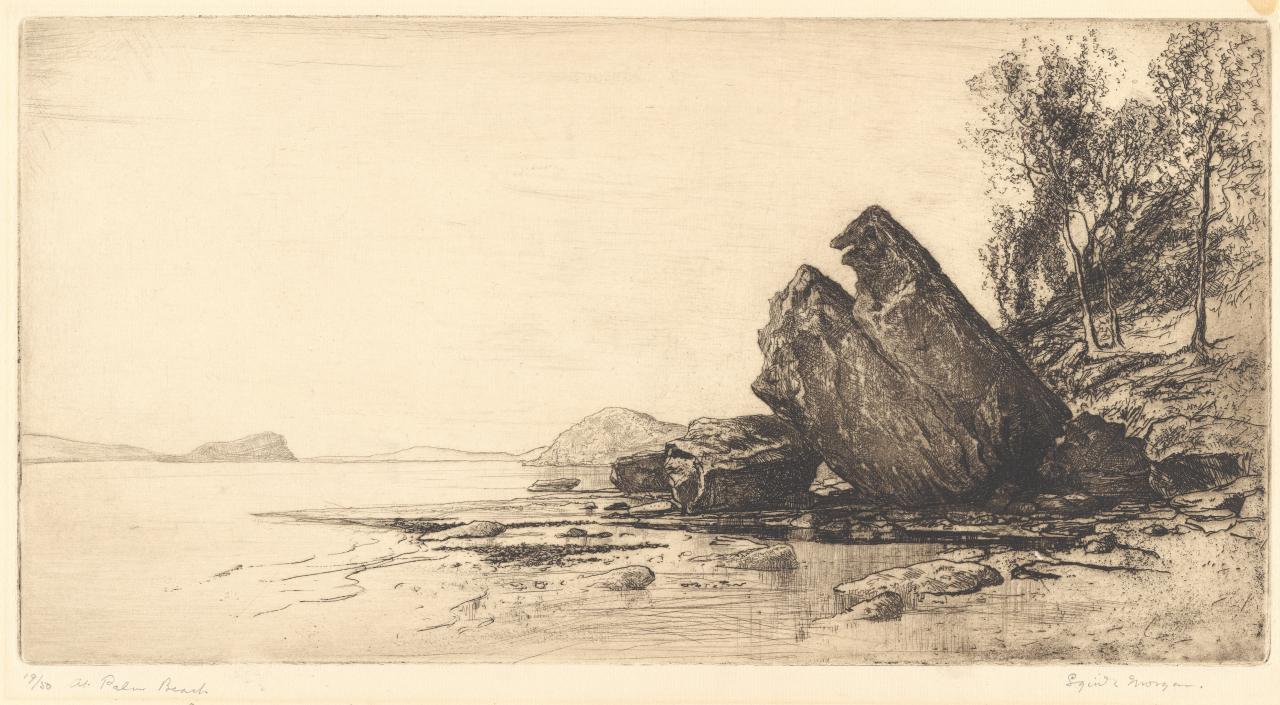
At Palm Beach (1920s) by James Squire MORGAN - from and courtesy National Gallery of Victoria, Melbourne, Felton Bequest, 1926 © Estate of the artist. Item: Df112248
The Boomerang Walking Club - Pittwater Days
'We were like the blacks; we wanted to live secretly, silently, have an unseen life'. [3.]
As she replies to her young Readers:
'KING INGODA' (Bourke) : The Boomerang Club purposely remains a small company with a high qualifying standard. We seek the solitude and peace of the bush; we detest noise and interruption and anything that spoils the native charm of our quiet excursions. Cinderella's Answers (1932, August 10). Sydney Mail (NSW : 1912 - 1938), p. 48. Retrieved from http://nla.gov.au/nla.news-article166226104
HELEN HOSKINS (Wollongong) : The Boomerang Club exists to train its members in efficient long-distance walking and to promote the study of bushcraft, Nature, etc. Most of our members are keen on botany, photography, bird-lore, and the literature of outdoor life. Only a small number of candidates can be accepted for this training, and, obviously, only those who live convenient to Sydney. Guests from the country are invited to share our walks when possible. Cinderella's Answers (1937, April 21). Sydney Mail (NSW : 1912 - 1938), p. 48. Retrieved from http://nla.gov.au/nla.news-article160502078
Living at Lindfield their walks frequently brought them to Pittwater, and Broken Bay, where she could gaze across to an old favourite home on the Central Coast, with many a tramp through the Ku-Ring-Gai Chase National Park and even to Barrenjoey. However, Palm Beach was also a place just for respite - the 'First Correspondent' referred to here is her sister Eunice, who would soon marry a pen-pal from Queensland:
The Children’s Page
Conducted by Ella McFadyen
Little friends who wish to visit Cinderella are reminded that the time to call at the 'Sydney Mail' Office, ' Herald ' Building, Pitt and Hunter streets, is between 10 and 12 on Tuesday mornings. Cinderella is on the second floor.
A Sea Change
When First Correspondent and Fairy Godmother returned from their three weeks of holiday in Queensland Cinderella, said that it was quite time she took, if not a holiday, at least a change.
UNFORTUNATELY, holiday was not quite possible. There was too much to do. However, she put some things in a bag, bought new bathing shoes, and fiddled about with her typewriter till she discovered the locking gear that is supposed to ensure safe carriage to the portable models. Of course, it would have been more fun lo leave the typewriter and take the camera instead, but that could not be. Ali Baba, with a deep distrust in his golden eyes, got between the adventurer and the garden gate and wept aloud. No one needs to tell him what packed bags mean. Even a last-minute gift of sardines did not quite mend that small broken heart. It is sad business leaving one's pets; but that once over, heigh-ho! for Palm Beach and the surf.
At Palm Beach one may sit in a deep balcony (made from the rough stone which seems to be the typical architecture of that holiday land) and look up over the surf and the dunes to Barranjoey Lighthouse. See that spelling? Mr. Russell, who tends the lighthouse and really must know, says that Barranjoey and not 'Barrenjoey' is the correct form officially accepted, and he pointed to the lettering on a locker in proof thereof. In the early days (the lighthouse was opened in 1880) 'Barrenjuey' was the recognised form, but that has been discarded.
It is a windswept place, that lighthouse hill with the brown stone building of the lighthouse and its residence and high-walled garden looking rather like a fort built to defy invading elements. Lower down the slope, on the sheltered side next to Pittwater, there is pretty vegetation and a nice little rocky stair of rough stones. Flocks of wild goats wander about, not very brave in spite of big horns and long beards; and down at the foot of the hill there is a shed where a man once kept a little museum of snake-skins and such trophies he collected. He had the skin of an echidna there and some really fine snakes and iguanas.
A pity he could not have collected for his trophies the wobbegong some fishermen left on the beach. This, perhaps the only really comic member of the shark family, was about five feet long and very fat. He had a foolish face with fringy things like seaweed for whiskers, and such queer fins that they looked almost like little legs. He probably used them for scuffling along the bottom of the pools, for he hunts about on the bottom, I think
‘When my glass slippers wear out,'' said Cinderella, I shall get a pair of shoes made from the beautifully patterned, carpet-like skin of a wobbegong — after having it soaked for a twelvemonth in eau-de-cologne.'
WHEN the morning dip was over and the morning work of getting together copy and answering letters (those letters that never cease for a day!) had been faithfully attended to, came freedom. They were mostly companioned hours, too. Francis Sherwood, our Nana Glen member, shared a day: and 'Split-pin.' who will be remembered only by our most ancient members as one who occasionally made daring lightning raids across the border of the Ingle Nook, shared another. Once there was David, who is going to be a member some day, but is only five as yet. Sheila, too, was a little girl-chum with a genius for showing one nice walks. In passing we must wish her success with her bursary exam. Then there was an old sea-eagle who was rather good company along the cliff at evening. He went out at that hour to do his perilous fishing, and once came back trailing something that looked like a slingaree with a long tail. Jock, a long-headed Scotch terrier with an approachable heart that really belied his extraction (Scotch terriers should be a little dour and slow to be friends, but Jock always loved at first sight anyone who would take him home to tea and biscuits), was always ready to accompany one on a walk.
Once a dauntless company of adventurers (three in number) set off on the Newport 'bus, with an enormous picnic basket, and made their way through the callistemon scrub, that seemed all afire with blossom, towards the cliffs where hides the Hole in the Wall. There was some good scrambling before the basket was set safely on a ledge and the steep path to the cave was discovered and essayed. It is a most impressive cave, full of the footmarks of little wild creatures, and very dark and cavernous towards the rear, where a fall of rock has blocked what, was, I believe, at one time a landward exit. Anyway, it was a good cave for adventures, and could quite suitably, have been used to hide a chest of pirate treasure. (Anyone want to fit out an expedition to go there and make sure ?) It was pity Cinderella did not have her camera along that day: but she could hardly have taken a snap of herself dauntlessly climbing up to the cave mouth, and the comrades below were too steeply below to have done so, either.
BEST of all times, probably, were the lonesome rambles along the cliff path, when one could shout reams of Gordon's glorious 'Song of the Surf' with no one but the sea-eagle to hear. Most people at the seaside murmur bits of 'Sea Fever' and other Masefield fragments, and lots more no doubt think of Byron, even if he is considered too out-of-date to quote aloud; but all proper Australians should get 'The Song of the Surf' by heart before they go down to the sea. Out on the rocks towards Whale Beach, where one can gloat over the pools of sea anemones (pools lined with crystal and velvet and sprinkled with jewels, where the many-coloured living blossoms quiver and unfold), one could hear the big waves whooping in over the sunken ledges and feel the shock of them as they surged through the hidden channel beneath, making all the rocky bases of the cliffs shudder with their force. Only then did one get in full the sonorous splendour of Gordon's lines —
You come, and your crests are hoary with the foam of your countless years;
You break With a rainbow glory through the spray of your glittering tears.
To watch the breaking of a high surf on these great rocks and realise the immensity of the force that sends them swinging in is to touch the verge of a very great discovery — a thing that breaks like a dazzling light and soars splendidly above the power of words into the realm of conviction. Then the waves fall back from the cliff in a smother of foam; the sea-eagle, swoops and wheels again to the land, and the great discovery, that a moment since was about to solve all mysteries, is caught up again just beyond human understanding. The mystery remains.
When against the rocks he was hurled, and sucked again to the sea,
On the shores of another world, on the brink of eternity.
On the verge of annihilation, did it come to that swimmer strong,
The sudden interpretation of your mystical, weird-like song ?
The lines ought to be graven on a stone slab along the cliff path for the joy of all who love poetry and the sea, and the swinging, rhythmical waves of both. And that brings us back to the earth and the realisation that the seaside days are spent; that there are hundreds of unopened letters lying everywhere, and the Poetry Competition ought to be judged. It has been held over quite long enough. Children's Page (1928, October 31). Sydney Mail (NSW : 1912 - 1938), p. 54. Retrieved from http://nla.gov.au/nla.news-article158404607
Which home Ella stayed in is not recorded - from the earliest though, her tenacity in wanting Australian stories for Australian children, as well as photographs of children's playgrounds, lends itself to the conjecture that she and Maybanke Anderson (nee Wolstenholme), who also was published by Angus & Robertson, must have known each other. Her eldest son Harry, a lawyer and passionate ornithologist, was also part of the Palm Beach Land Company and one of the early owners of a beachfront home and weekender at Palm Beach and the family had a terrier named 'Jock':
.jpg?timestamp=1544130612932)
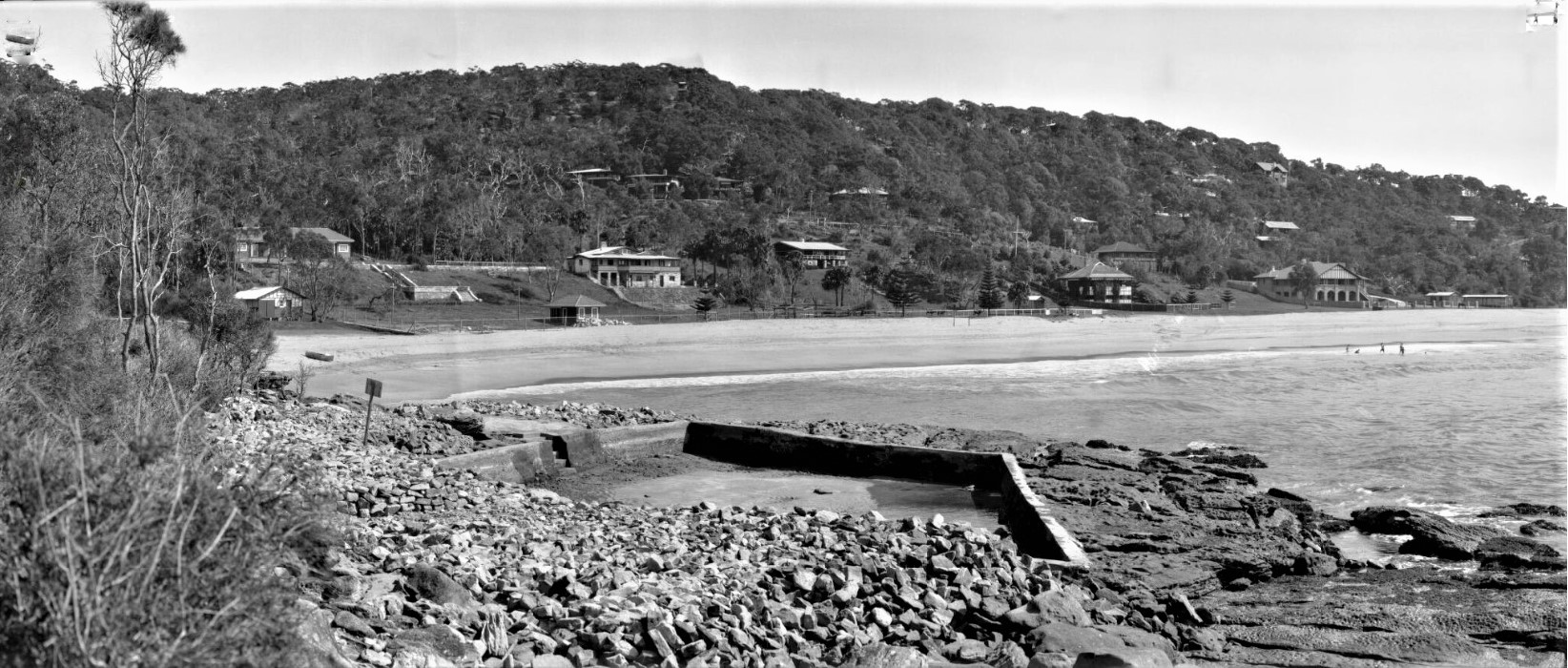
.jpg?timestamp=1544130747931)
.jpg?timestamp=1544130775468)
.jpg?timestamp=1544130667126)
.jpg?timestamp=1544130862800)
WEDDINGS.
CAMERON-MCFADYEN.
The marriage of Miss Eunice McFadyen. daughter of Mr. and Mrs. Donald McFadyen, of Wondabyne, Lindfield, to Mr. Clarence Johnston Cameron, elder son of Mr. and Mrs. J. B. Cameron, of Erracht, Beechmont, Queensland, took place at St. Martin's Church, Killara, yesterday morning. The Rev. L. Charlton officiated. The bride wore a gown of cream guipure Iace, finished with parchment-coloured satin, cut high to the neck, and with long tight-fitting sleeves. Her hat of hand-woven straw was trimmed with roses and she carried a shower posy of frangipanni and gold roses. Miss Ruth Wilson, cousin of the bride, acted us bridesmaid. She wore a period gown of pale pink georgette banded with folds of mauve satin, and a hat of amethyst hand-woven straw. She carried a bouquet of mauve gladioli, and pale pink carnations. Mr. Lindsay McFadyen was best man. After the ceremony the guests were received at the bride's home by Mrs. McFadyen, who wore a gown of black satin, with a black hat relieved with vieux rose. She carried a posy of pale pink roses, mignonette, and heliotrope. Mrs. Cameron, mother of the bridegroom, wore a fawn crepe-de-Chine frock, and hat to tone, and carried a posy of blue delphiniums and gold roses. The bride left for the honeymoon wearing an ensemble of kasha cloth, in tones of autumn brown, the coat being finished with leather trimming. WEDDINGS. (1929, February 27). The Sydney Morning Herald (NSW : 1842 - 1954), p. 11. Retrieved from http://nla.gov.au/nla.news-article16534461
Ella's Readers get to hear about it too:
An Interesting Wedding
A WEDDING which our correspondents have anticipated with interest look place at St. Martin's, Killara, on February 26th, when Eunice Graham McFadyen, of Lindfield, was married to Clarence Johnston Cameron, of Beechmont, Queensland. The pen-names by which the bride and bridegroom were known on the C.P. were "First Correspondent" and "Macnore." The bridesmaid was Ruth Wilson, who formerly corresponded under the pen-name of "Pandora." The ceremony took place in the morning, and it was a further happy connection with our club that the presence of Miss Maud Owen at the organ was due to her introduction to Cinderella by a group of our Eltham correspondents. After the wedding luncheon, at which only a few immediate relatives and one or two Ingle Nook friends were present, the bride and bridegroom left for a motor tour of the South Coast. After a brief stay on their return to Sydney, they will proceed by car to Beechmont, where they are to make their home. Among the gifts made to the bride were some charming mementoes from members of the Cinderella Club, the staff and pupils of Eldinhope, and the Old Girls' Union of Wenona College. The photographs were kindly taken by "Bing Boy," of the Ingle Nook. An Interesting Wedding (1929, March 13). Sydney Mail (NSW : 1912 - 1938), p. 54. Retrieved from http://nla.gov.au/nla.news-article166258076
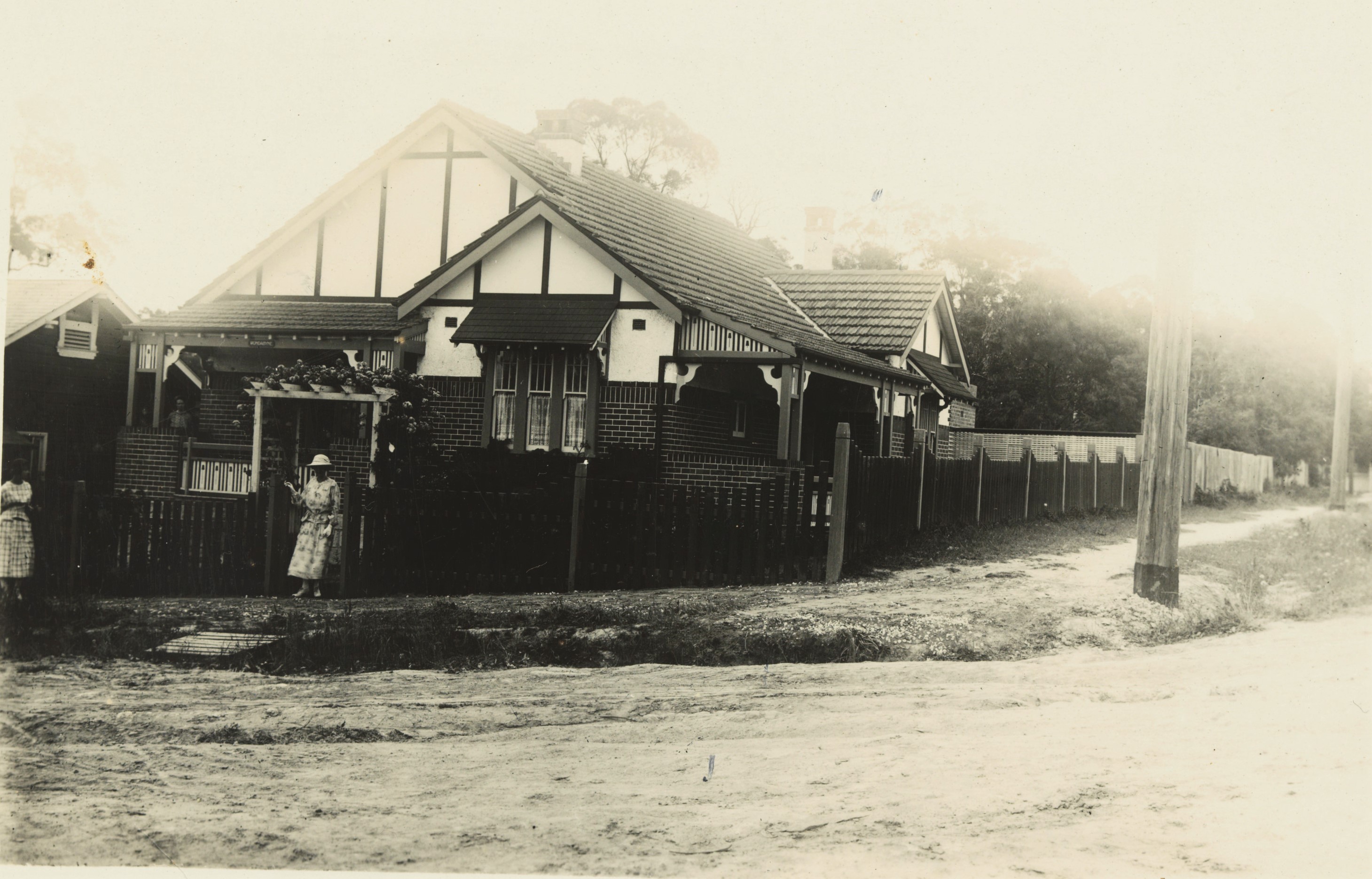
Item c078560078 and c078560079 (back) reads '24 Kenilworth Road, Lindfield - McFadyen home' - from Ella's Series 04: Residences, homesteads, factories and farm buildings, mainly New South Wales, ca. 1879-1953 / collected by Ella McFadyen - from the collections of the State Library of New South Wales.
More on the Boomerang Walking Club:
Walking Club Notes
SO much interest has been shown in our Boomerang Club walks and camps, and the one-day rambles of its junior branch the Greenwood Club, that Cinderella would like to see our C.P. boys and girls form their own local clubs along similar lines— small parties being at all times the most enjoyable. As we walk to promote health, endurance, and efficiency, and to encourage self-discipline, as well as to amuse themselves, the Boomerangs have rules to which they adhere strictly. In the matter of dress, neither the freakish (such as one sees all too often) nor the slovenly is tolerated. Camping arrangements, while simple, are carefully planned to avoid unnecessary hardship, and the selection and carriage of food are calculated to avoid overloading the packs or risking deterioration of content.
A well-trained walking club need not cease its excursions in hot weather, as was proved by the fact that the Boomerangs made full use of their New Year as well as their Easter holidays; but beginners do well to start training in cool weather. In order to help our readers to plan their walks on the best lines Cinderella will publish a short series of articles on the topics of most importance to walkers, such as winter and summer dress, footwear and care of the feet, camp equipment, portable bedding, rations, and how to park them. Some of the adult clubs already organised are doing very good work; other parties one meets are mere 'bush-crawlers'— not walkers at all, lounging along in absurd clothes and carrying huge packs of food to very small distances. We do not want to waste our opportunities like that. The articles will begin next week. Walking Club Notes (1932, April 20). Sydney Mail (NSW : 1912 - 1938), p. 48. Retrieved from http://nla.gov.au/nla.news-article160080599
Walking Club Notes
By Cinderella
LAST week the topic was raised of how far our ramblers should travel in a day. On a tour of several days it is wise, if possible, to alternate long with fairly short stages, thus evening up the strain. In single - day trips the walkers may extend their powers to the full without fearing tired feet for the morrow. But in no case should walkers 'go till they drop' just for bravado, and no untested walker should be admitted to a long-distance tour. While it is natural for the boys and the stronger walkers to offer help to the weaker ones, no one worth her salt likes to have her pack carried for her. An even efficiency is the thing to aim at, and for this reason walking clubs should grade their members into small groups (half a dozen is a pleasant and sufficient number) of tested capacity and speed. Otherwise a plucky beginner may knock up in trying to keep up with seasoned walkers, or the day may be spoiled for the good walkers in hanging back for a laggard. In the Boomerang Club we try out our junior grade (the Greenwoods) over the Waterfall-Audley course. It has many advantages. In summer it is so shady that heat counts for little, and in winter there is the bracing prospect of having to take off one's shoes and wade the chilly waters of the Upper Causeway. I have heard venturesome Greenwoods whispering, 'Oh, I do hope it will be running deep. I'd hate to miss that part of the test.'
Taking a train that leaves Central approximately at 8.20 a.m., the party turns out at Waterfall soon after 9, picks up the top of the National Park drive that joins later with the Lady Carrington Drive, lunches about 11 a.m. at one of the creeks — the first one where dry fuel can be found — takes tea beside the fresh water just above the Lower Causeway, and there, if the party is tired out, a bus can be picked up to do the climb to National Park station. If still fresh the mile-long climb can be done on foot, and in many instances our parties have preferred to walk the additional distance to the electric service at Sutherland, down the beautiful Rawson Drive in the evening cool. This test of 10 to 13 miles or so is a useful one, for the party is never stranded very far from help if a walker knocks up — but then we have never had even the young children tire over such a good surface and such easy grades. After the first trial has been met successfully the novices should gradually extend their distances, learn to carry heavier packs, and try out their endurance on rough tracks and over broken country. For camping tours the average of efficiency should extend to carrying a pack of 20lb and over through fairly rough country, with — say — maximum stages of 20 miles a day. Many thoroughly enjoyable trips are then within range, the conditions in most cases leaving the walker with something in hand— either as to distance, pack-weight, or the like. Walking Club Notes (1932, June 1). Sydney Mail (NSW : 1912 - 1938), p. 47. Retrieved from http://nla.gov.au/nla.news-article160081493
More stories from those walks:
LION ISLAND, AT THE MOUTH OF BROKEN BAY.
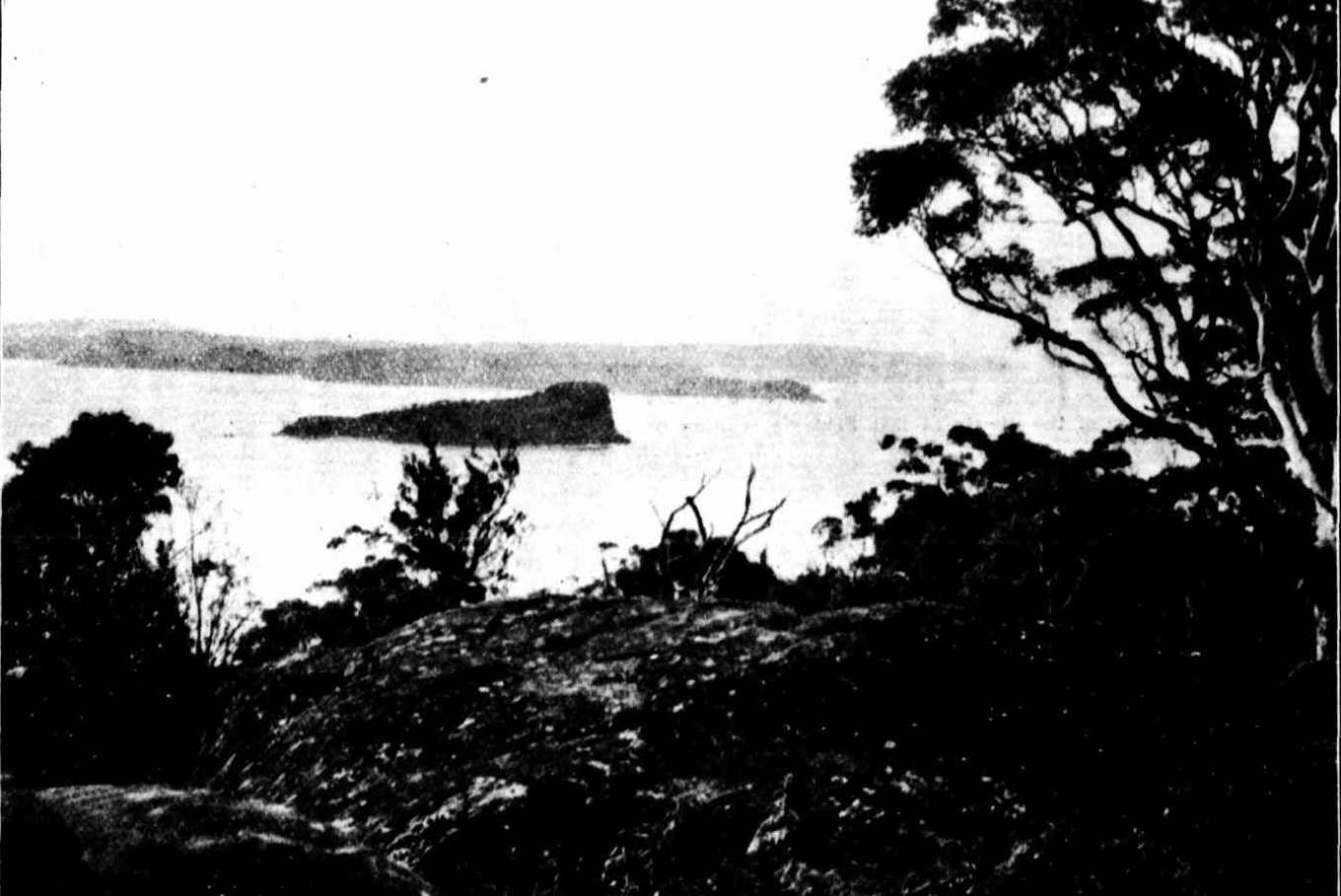
These rocky shores are a favourite haunt of our Boomerang Walking Club. LION ISLAND, AT THE MOUTH OF BROKEN BAY. (1933, November 22). Sydney Mail (NSW : 1912 - 1938), p. 47. Retrieved from http://nla.gov.au/nla.news-article165961286
Her Readers and Letter Writers would share information about their own walks, including those taken here:
Cinderella' s Post Bag
MY DEAR CINDERELLA,— Wahroonga. It is such a long time since I last wrote to you that I thought I must drop you a line. At Christmas time we spent two glorious weeks at Narrabeen. The weather was ideal for surfing, so we made the most of it. I always had an idea that the surf was rather dangerous there, but only on two or three occasions we found the undertow strong. One day we hired a boat and went up Deep Creek. It was rather a hot day, and my arms got a bit sunburnt. On each side of the creek people had pitched their tents, and they looked so nice dotted here and there amongst the trees. People were bathing in the water, and we had to steer the boat in a zig-zag fashion practically all the way alone.
About half way up we pulled in towards the bank, and everybody hopped out to have a look round. After I having afternoon tea we started for home. My sister I took several snaps, and they came out very well. It was about five o'clock when we got back to the boatshed, and everybody said what a glorious day we had had.
Another day we walked up Deep Creek-road towards the Elanora Golf Links. After walking some distance we turned off the road, and climbed the hill. When we reached the top we were rewarded with a lovely view of Narrabeen Lakes. Walking further on we could seethe ocean and coastline. On reaching home everybody was feeling rather hungry, so we voted for an early tea. Our second long walk was from Narrabeen to Collaroy. Leaving the main road we went down a side street and then up a steep hill. Reaching the top we had a glorious view of the ocean, and could see all over Collaroy, and Narrabeen away in the distance. I enjoyed the holiday very much, but the two weeks went too quickly. Ruby Litchfield, my old correspondent, is quite well again. 'Darkie's' address is Carruchan, Kennedy, North Queensland, now. She still writes me nice long letters. Trusting you are quite well, and not forgetting Ali Baba. With love from 'CHERRY BLOSSOM' (O.I.).
(Dear 'Cherry Blossom,' — Like myself, most of our old brigade will be very much interested to see your name on the C.P, once more. I know Elanora as a place of very fine views, and you must have enjoyed your Narrabeen holiday very much. Thanks for sending me word of Ruby and 'Darkie,' to whom I owe a letter. — Cinderella.) Cinderella's Post Bag (1932, March 9). Sydney Mail (NSW : 1912 - 1938), p. 47. Retrieved from http://nla.gov.au/nla.news-article160081879
While Ella and her friends made frequent treks into Pittwater, gathering insights for her to share and inspire the Children with:
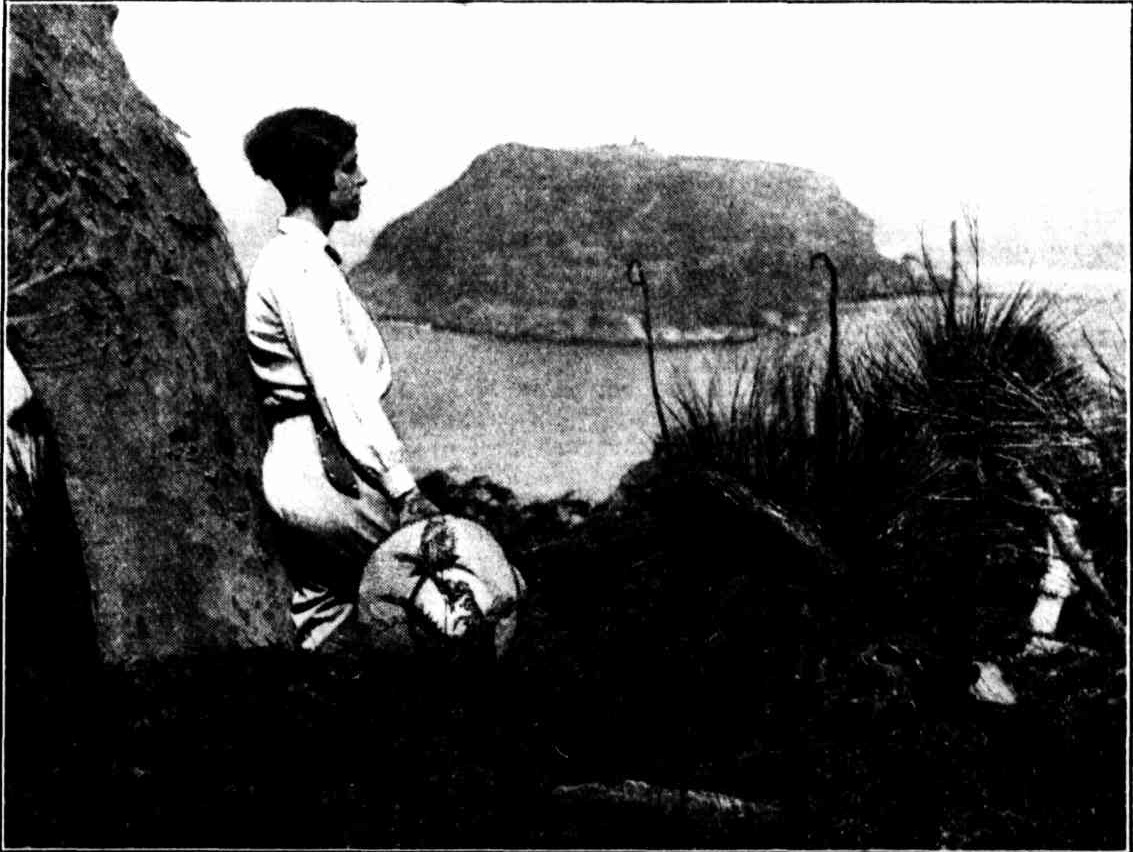
JEAN, Of the Boomerang Club. The picture was taken from the Pittwater shore, and shows Barrenjoey. Children's Page (1933, February 8). Sydney Mail (NSW : 1912 - 1938), p. 47. Retrieved from http://nla.gov.au/nla.news-article165958448
Boomerang Club Notes
By Number One.
OUR Easter walk from Gordon to Broken Bay added fresh laurels to those invisible wreaths that adorn our members' heads — their old felt hats notwithstanding. Cinderella had so little spare time at Easter that the walk had to be compressed between Sunday night' and Monday night. As speed was essential, only a small party likely to maintain an even pace was selected. To grade as a Boomerang one must, among other qualifications, be able to walk 20 miles in a day without serious fatigue. To graduate as Big Boomerang one must be able to face an emergency of 40 miles within 24 hours. Several senior members have possessed this qualification for years.
Starting from Gordon about 8 p.m., twelve moonlit miles brought us to our supper on a rocky site where uncontaminated water and plentiful firewood were available. The midnight march was resumed, despite a vivid electrical storm to seaward, and we lay down in the pre-dawn chill on our old camping ground at Elusive River. A camp-fire of redgum, a snack, and an hour or so of sleep under our coats, and we were off for the cliffs above Broken Bay and that lovely panorama of Hawkesbury River, the Bay, Brisbane Water, Pittwater, Lion Island, and the sunlit ocean, which we believe to be uneclipsed by any scene on the coast.
A hot breakfast, a doze, and a little loitering and we are back on Elusive River — which is only mapped as such by the cartographers of Fairyland — for lunch. Our last meal was at dusk, near country sadly desolated by road-making, and then with our backs to the bush it was the hard road under our feet again. The 'Secretary Bird' and 'Beetle' marched well and earned packs round about 20lb weight. 'Lilac Blossom' and 'Ashie' (a new recruit' from Queanbeyan, where 'Toad' has been training her) proved very stout fellas and finished swingingly at four miles an hour, making Gordon by 10.30 p.m. The mileage, irrespective of camp-making and rambling, was 20 miles of hard road and 26 of tracks, much of it cluttered with loose stone. The 46 miles total was a creditable performance — and everyone was able to get into city shoes and go to work next day.
Cinderella, will see her young friends every Tuesday morning between 10 and 12 at the 'Sydney Mail' Office, 'Herald' Building, Pitt and Hunter Streets. Business girls may call from 5 to 6.30 p.m. last Tuesday in each month. Cinderella's Page (1938, May 4). Sydney Mail (NSW : 1912 - 1938), p. 47. Retrieved from http://nla.gov.au/nla.news-article166227905
The poems inspired along these walks ran in other publications - these are two shared previously about Pittwater and Broken Bay:
WEST HEAD
Happy it is in the blossom time,
In the blossom time of spring,
When the morn is in its golden prime
And birds are on the wing.
Blue of the tide upon either hand,
From the sea to Broken Bay,
And the grey old lichened boulders stand
Knee-deep in flow'ry spray.
Blithe at the heart for the wattle's sake,
And the scent the warm wind spills,
Where the Hawkesbury lies, a gleaming snake,
Amid the deep blue hills— ;
Stirring the bee's with their honeyed load
From the blossom feast beneath,
Happy it is to take the road
That winds across the heath.
ELLA MCFADYEN.
WEST HEAD. (1929, January 4). Windsor and Richmond Gazette (NSW : 1888 - 1954), p. 2. Retrieved from http://nla.gov.au/nla.news-article85927422
SANDS OF MORNING.
by Ella McFadyen.
Summer breathed over the hills to-day,
A waft of the bush and a wind from the bay,
And my truant thoughts went straying:
Pittwater flickered with nor'east flaws,
The surf ran high 'tween the Lion's paws,
And the spring-fed runnels' were playing.
I saw the hills that drop to the sea,
And a honey-bird's call was a call for me
And the great grey sandstone boulders
Were elephant's browsing, heath to the knees.
And the rosy waxflowers, clotted with bees,
Fondled their lichened shoulders.
To-morrow I'll rise and be ready to roam
In the starlit hour when the cats come home,
Ere ever the birds are waking,
When each needlewood thorn is a dewdrop's place,
And her thread-like blossoms are fairy lace,
And the whole world's mine for taking!
I must seek the lairs where I used to lie,
Curtained by trees and under the sky;
I must find and touch and recover
The sights and sensations laid away,
Where the Lion lies couchant at Broken Bay,
To welcome me back like a lover.
The strong white feet of the winter rains
Have trodden the campfire's cold remains,
The lizards my hearth are keeping;
I must find the cave where the fairy-mouse
And her wee pouched kindred kept their house,
And-the nest where her babes are sleeping.
Grape-blue the hills in the dawn shall be,
And the sun shall rise from a white-gold sea,
With light for the day's adorning,
Where the rain-washed track is a virgin sheet
For the printed tale of a pilgrim's feet;
My feet on the sands of morning.
SANDS OF MORNING. (1935, March 14). The Sydney Morning Herald (NSW : 1842 - 1954), p. 2 Supplement: Women's Supplement. Retrieved from http://nla.gov.au/nla.news-article17171195
That this place was a solace and refuge to Ella and her friends is threaded through all her works. Even decades later she recalls her visits here as visions. Her interview with Hazel de Berg marks pointedly the great beauty of the Australia as experienced in her many bushwalks, and one particularly long bush walk from Gordon, a Sydney suburb to the coast here and back. The bush walk started at 3am and finished at 11 pm and covered 42 miles. Ella remarks that her bush walking friends relished the experience.
In 1911 the following 'Peg Man' poem was published - this was a game Ella and her brother used to play with their cousins on the banks of Macquarie River in those eras where children made their own toys and amusements:
THE PEGMEN.
BY ELLA M'FADYEN.
We made the Pegmen all ourselves
From some of mother's pegs,
With little bits of kindling wood
Tacked on for arms and legs.
We made them in the summertime,
When days are long for play,
And lesson hours are early done.
And Cliff came up to stay.
We made them tools of wood and tin,
To help their farm to keep,
We built them dams and shearing sheds,
And paddocks for their sheep.
Cliff made them crooked roads, where they
Could ride their wooden horse,
And where be scooped a gully out,
He made a bridge across.
I built the woolshed and the gates
With sticks and things I got,
And Dorry, though she's just a girl,
She helped us quite a lot.
Cliff begged some oilcloth for their boots
(Although they have no feet), '
And Dorry helped to make their clothes,
Because she sews so neat.
From here to Pegmen's run, you know
Is quite a longish way,
Across the paddock, where the ram
Chased Cliff and me one day,
It's lonely there when evening comes'.
Because the river moans,
And makes a little saddish sound
Among the crossing stones.
They aren't afraid. They work all day,
As honest Pegmen should,
Their hearts are oak, although their heads
Are only clothes-peg wood.
And then we water all the roads
Outside the Pegmen's run,
And send them racing through the mud—
Oh, that's what I call fun.
And if they tumble in the creek,
You simply fish them out —
They aren't like silly dolls you buy,
That people scold about.
So if you get the kindling wood,
With which the fires are lit, -
And ask your mummy for the pegs
As soon as they are split;
And if she's got some oilcloth left
From covering her shelves,
Why, then, perhaps you'd like to make
Some Pegmen for yourselves.
For if you live away from town,
And want to have some fun,
There's nothing half as good, you'll find
As games on Pegmen's run.
THE PEGMEN. (1911, September 13). The Sydney Mail and New South Wales Advertiser (NSW : 1871 - 1912), p. 44. Retrieved from http://nla.gov.au/nla.news-article164333162
These stories, begun decades before, would grow with more 'chapters' added, which were first run in newspapers and eventually led to them being published as very popular children's books with wonderful illustrations. The Pegmen Tales (1946) and Pegmen Go Walkabout (1947) and Little Dragons of the Never Never (1947), featured the adventures of two little horned dragons from the centre of Australia. Ella even had these lizards as pets and became so good at looking after them and other Australian lizards both Taronga Zoo and the Australian Museum sent several to her for care. As such, Ella was an early wildlife carer:
TAMING THE LIZARDS
Miss Ella McFndyon has a flair' for winning the confidence of wild creatures of the bush. She has even managed to tame and to breed the tiniest of lizards. At the request of the authorities of Sydney Zoo, Miss MacFadyen has made a special study of that innocent and harmless little creature, with the fierce guise and the alarming name, the Horned Dragon. This, by the way, is .the least libelous of of its names, for in Latin it is Moloch horridus, and in bush English it is Mountain Devil, Demon Lizard, and anything else ugly that its appearance seems to suggest. Miss McFadyen will talk of 'The Horned Dragons of the Never Never,' from 2FC at, 10.45 — 'Women's Session' — on Wednesday morning next, and the talk will be relayed to 2NC, 2NB, 2CR. Therefore country folk may be sure of .being able to hear Miss McFadyen's story. TAMING THE LIZARDS (1937, September 11). The Northern Champion (Taree, NSW : 1913 - 1954), p. 8. Retrieved from http://nla.gov.au/nla.news-article162159928
DELEGATE FROM LIZARD LAND
By ELLA McFADYEN
WHEN Chips, the Horned Dragon from the Never Never, reached me after his long overland journey, he was just six and a half inches of sad little lizard, thirsty and troubled from his horned head to the tip of his thorny tail. Caring for these desert lizards, when they are sick or unhappy, calls for special knowledge and a lot of attention, so Chips was sent to me to grow well again.
With the right care he was soon enjoying his bath, sunbake and meals, and putting on frequent changes of colour-bright yellow, earthy red, or lichen-green, as these little dandies of our sandy inland do, if they are in good health.
When I took Chips to the Junior Red Cross camp, as living material for our nature talks, I hardly expected that he would be elected camp mascot. Maybe it was the Bathurst air, or perhaps the tiny black ants on Mount Panorama were especially tasty, but he breakfasted heartily, and then spent the better part of each day in charming the young campers to a kindly interest in our harmless Australian lizards. These inoffensive creatures are too often hunted or killed, though they are most helpful in eating harmful insects. DELEGATE FROM LIZARD LAND (1947, January 29). The Sydney Morning Herald (NSW : 1842 - 1954), p. 4 (Playtime). Retrieved from http://nla.gov.au/nla.news-article27905983
What stands out about her books is they are still being enjoyed by youngsters today - when you can get your hands on a copy.
Pegman story available online: New South Wales. Department of Education. (August 1948). The school magazine of literature for our boys and girls Retrieved from http://nla.gov.au/nla.obj-775758110
WHY BABY REPTILES QUARREL
By ELLA McFADYEN
"NATURE has a reason- for everything. It is fascinating to find out why animals do certain things.
Some creatures, like sea-birds for instance, live together in large colonies, and others, like deer and wild cattle and wild horses, form large family groups under one leader, stronger and wiser and bolder than the rest. As a rule, however, Nature finds it better for her wild families to split up. Even with the herd animals just mentioned, there comes a time when the old leader is too feeble or too cranky for the good of the mob, and then a young fellow starts up, fights and defeats him, and takes on the leadership.
One reason why all the little animals of a family do not stay together is that an enemy might kill them all in one attack. If they have scattered, some are sure to escape. But the chief reason why families break up and go different ways is that Nature insists that young animals learn to do their own hunting, instead of depending too long on their parents.
Savage animals, like lions and tigers, turn against each other as they become older. You never find a family living together once it has grown up. "
Among sea creatures, like the oyster, tides and currents carry the eggs here and there. The creatures that bore into piles and damage wharves, or attach themselves to ships, are another example of Nature's plans for scattering the young. Before they are full-grown, their bodies have limbs for swimming, but as soon as they make fast to a place that suits t hem, they change and become borers, or adapt themselves for sticking.
Many of our harmless, peace loving lizards have children who spend their early life quarrelling. The Big Skinks, like the Blue-tongue, the Pink-tongue, and the Giant Skink or Land Mullet, soon become so gentle as pets that they will take food from your hand. But they have big appetites, and their legs do not keep pace with their growth, so it is only as youngsters that they scamper about much. That is the best time for them to travel. And that is the time when you will see them snatching food from each other and nipping each other's paws.
This, pretty little striped skink is a finger-length of baby Pink-tongue, about a fortnight old.
In the Nature article In "Playtime" on July 16, the word "gills" was inadvertently substituted for "plates." The sentence in question should read: "Instead of scales, they have bony plates, called denticles, embedded In their tough skins." WHY BABY REPTILES QUARREL (1947, July 30). The Sydney Morning Herald (NSW : 1842 - 1954), p. 5 (Playtime). Retrieved from http://nla.gov.au/nla.news-article18037323
Some covers:
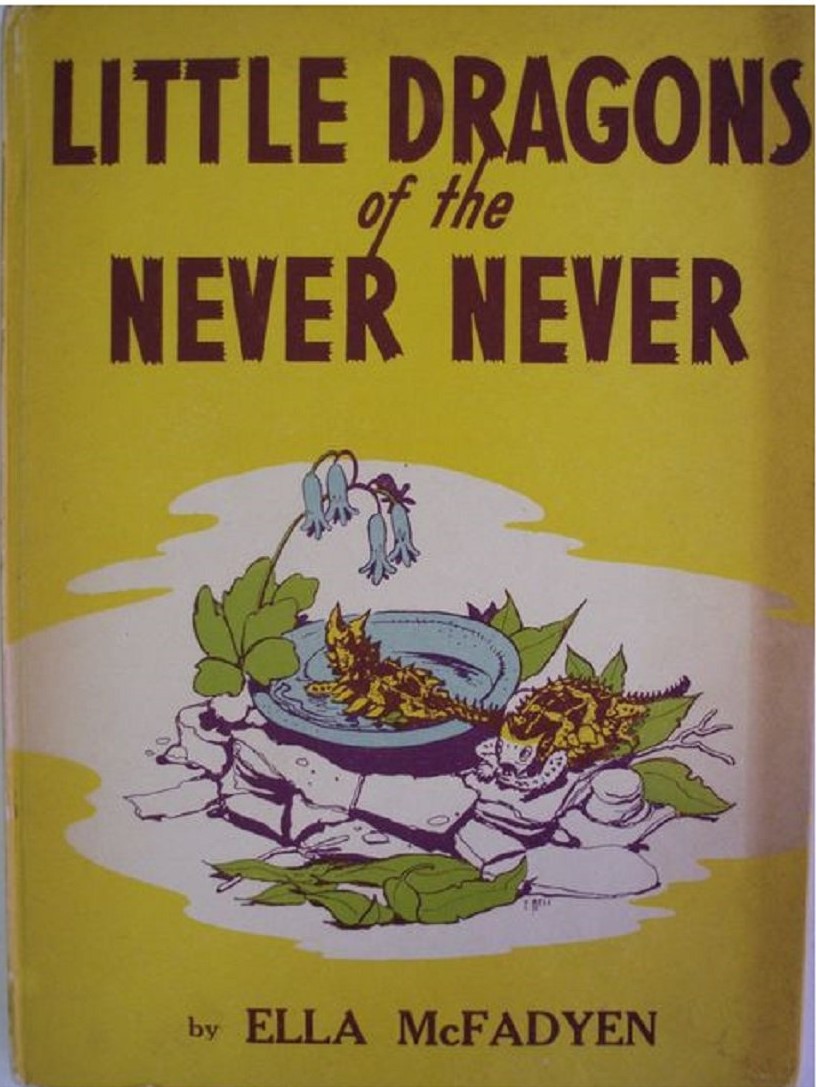
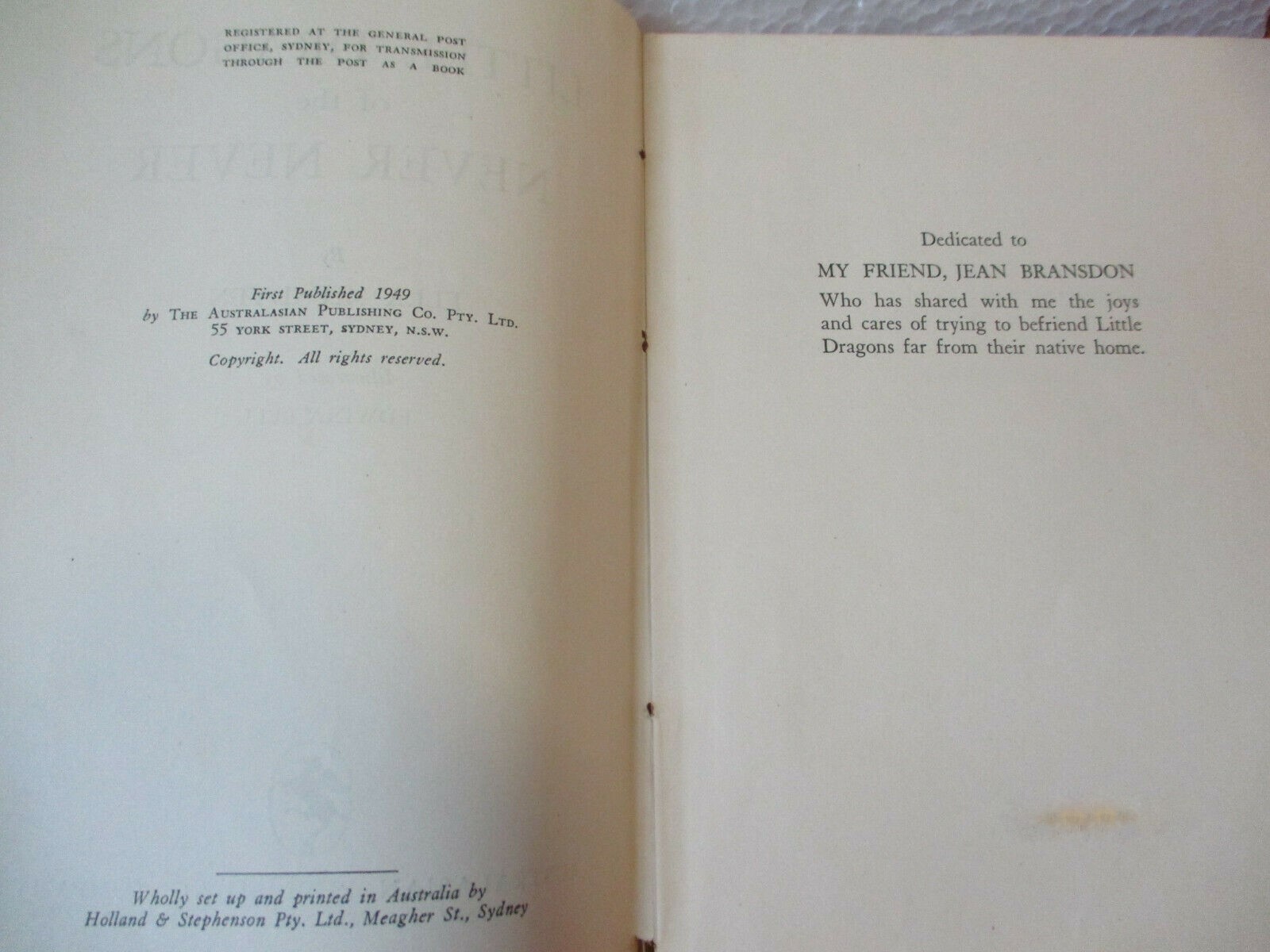
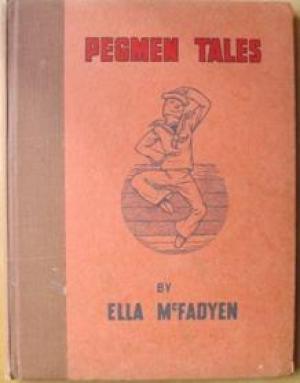
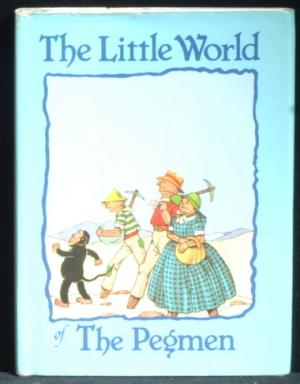
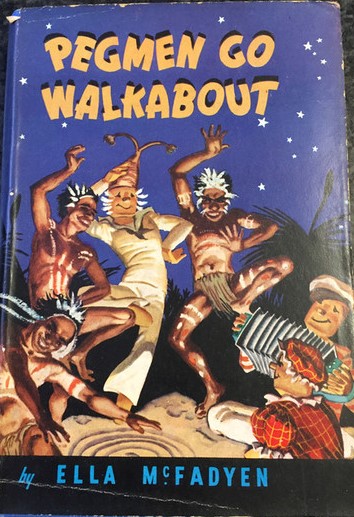
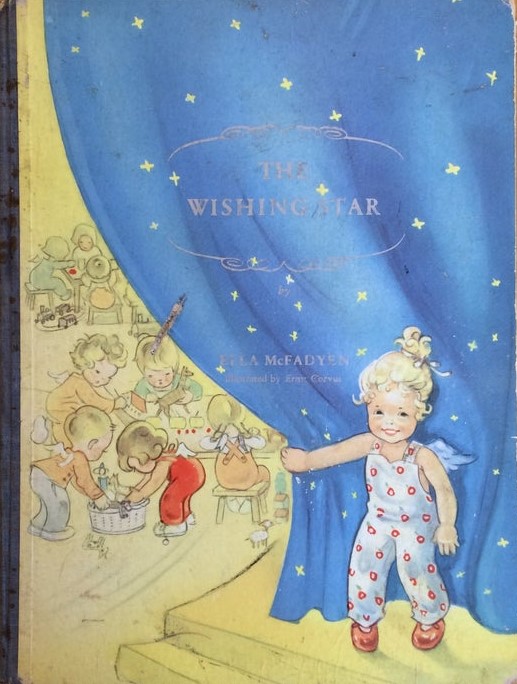
Ella created characters that lived in distinctively Australian landscapes, under Australian trees, in Broken Bay and Pittwater caves, in the swamps of the Never Never. These tributes were a part of that growing rise of Australian stories for Australian people and children that underlined Ella's involvement in the literary community of her day and her lifelong passion for nature writing and bushcraft. Her body of work is so large, and she was so prolific, several volumes would need to be published to collate them all into one coalesced work.
After the position at Sydney Mail finished, and her work for the Sydney Morning Herald was scaled back, she was offered a position reviewing manuscripts for one of her favourite publishers, Angus and Robertson, work she did until three years prior to passing away - another dream job! The first manuscript she reviewed was Dorothy Walls 'Blinky Bill', for which she produced a condensed version. This book, first published in 1933, gives us a timeline for her work with Angus and Robertson - which, if records showing she went on with them until 1972, shows an almost 40 year career with them too.
A Gum Tree In Heaven
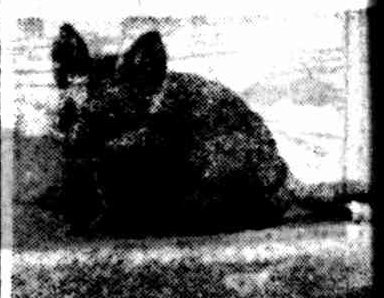
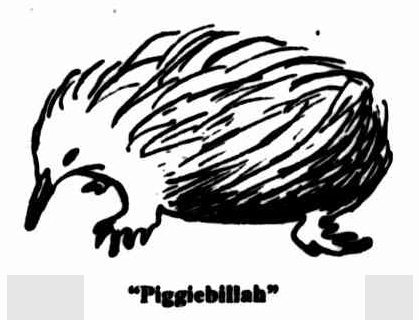
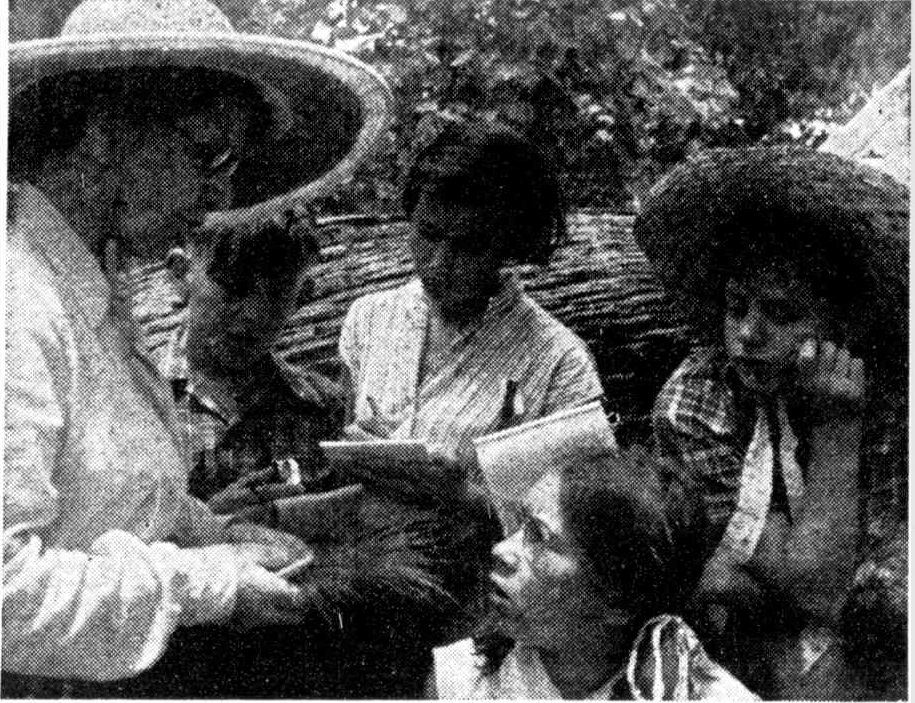
.jpg?timestamp=1580245774151)
.jpg?timestamp=1580261905908)
THE CONTRIBUTOR
THE TREES OF SYDNEY.
BY ELLA M'FADYEN.
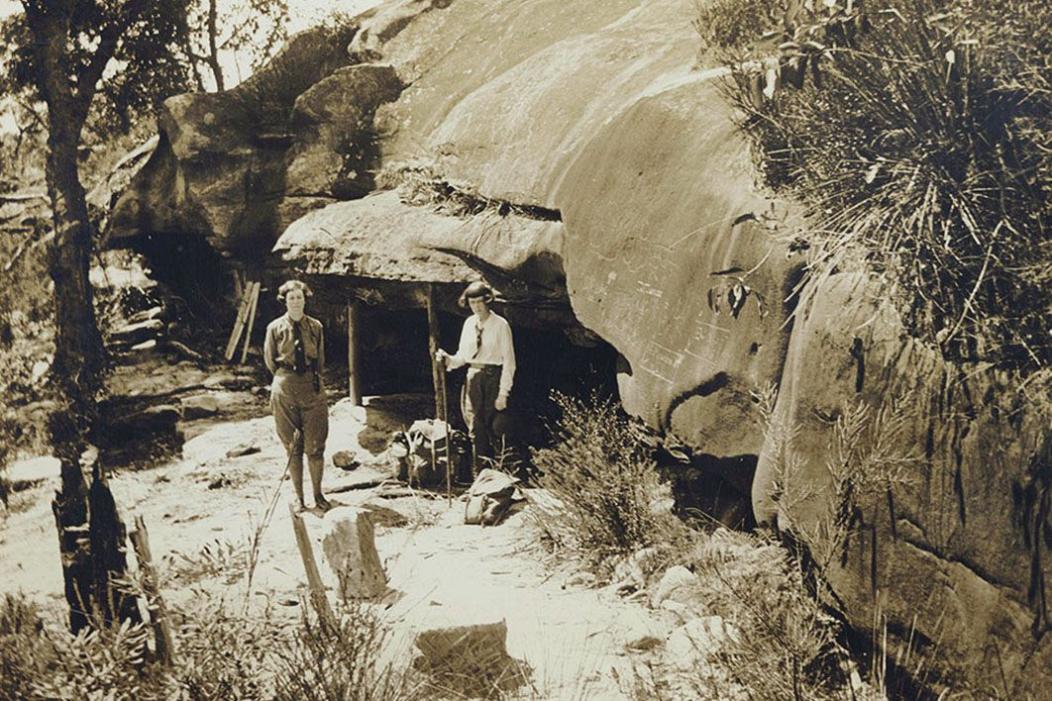
One more story by ella:
YOUNG FOLKS
WHERE THE STARS FALL.
BY ELLA M'FADYEN.
The paper lay spread under the Cootamundra wattle tree on the side lawn. A firmly-planted, holland-covered elbow held down either page, and served at the same time to support an obstinate little chin. The brown eyes above had not long learned the language of print, but they were proud of their accomplishment.
'If parents could only be convinced of the incalculable harm wrought upon a young and eager imagination by these idle and in credible fairy tales.' The active little brain behind the brown eyes could tip more understand the long words than the red, mischievous mouth could pronounce them, but the general drift was quite clear. Harry lifted his chin so that he might have one sunburnt fist free to. bring down upon the open page, Just as father used to do when denouncing some new move in politics.
'I don't believe It,' he cried, his voice trembling with indignation, his little frown meeting in a puckered line. Just at that moment he felt a hearty thump on his shoulder. 'Bravo, old man, that's the style.' Harry jumped up, he had believed the gar den to be empty. Nevertheless the voice went on, 'Did you ever see' a fairy?' Harry was a good deal startled, but he stuck to his guns.
'No,' he answered, stoutly, 'but I believe in them all the same/' It was rather uncanny, this conversation with an Invisible questioner.
'Why do you believe?' 'Because, oh, because I've just felt them.' Then he added, almost fiercely, 'You go down to the creek when it's all quiet and the shadows are long and sleepy, and you see if you don't feel the same. As if you could almost see them, just like on still nights you can almost hear the stars singing. Oh, I wish I could quite, instead of only 'almost,' ' he added wistfully.
'Softly, lad, do you really mean that? Very ?well, here I am.'
A little brown person, with a big head and mischievous eyes, stepped down on to the open paper, bowing low, cap in hand.
'By jove,' said Harry.
The visitor seated himself cross-legged, and laid down his cap. 'There are fairies,' he said, 'just as long as there are folks'who believe in them. Don't say again that you've never seen one.' Harry's first impulse was To put his hand over the little brown thing, as though it were a rare new beetle, but he conquered toe impulse.
'Why didn't I ever see you before?' he asked, under his breath.
'I've often been here in the wattle trees, one gets a pleasant sea breeze from the top, but I didn't quite know whether you were the right sort. I don't care to take my cap off till I'm pretty sure of the welcome I'll receive. See? It's a bit inconvenient to only be able to. appear to those who believe' in us, but It's a law that can't be altered. But now you have made me eternally your debtor.'
'What's that?' Harry asked.
'Oh, that if you want a good turn done at any time I'm your man. Anything I can do now?'
'I daresay there's really a lot of things if I could think of them, but what's your name, first?'
The brownie stuck a piece of grass in the corner of his mouth, and thought for a ?while. 'Name of Prickles,' he answered. 'At least it's this way. I'm fairly young for my family, Just about two or three hundred years. There was a big drought in full swing in the year that I was introduced to Australia; I've been thin and dry ever since — must have been impressionable. Well, my folk gave me a name I suppose, but a trifle like two or three hundred years even is a long while to re member a thing, so I forgot right out to »ave trouble.' 'But why Prickles?' Harry asked, staring hard at his guest. 'My friends call me that, 'cause I've got such a beast of a temper.' 'And those' who aren't your friends?' 'They leave me and my name alone, that's all.'
And the mannikin squared his elbows and doubled up his fists laughably. 'Then, if you please, Prickles, we'll be .very good friends.' i
'Just so, old chap; but you're an out size, you'll admit.'
He cocked his head on one side and considered. 'I might have you altered to fit,' he remarked thoughtfully. 'Here, catch hands, there, round about, and so. Feel a bit giddy, eh? Don't jump, that towering beetle Is only life-size after all.'
Harry laughed aloud. He was of a height with his little brown conductor as they waded knee-deep across the shaven lawn. Then he stopped with a sudden misgiving in his heart.
'I say,' he said, 'you're all right, aren't you? There are- brownies and brownies, you know, Prickles; and another migntn't like
'That's all right. I'm not one of your goblins or after-dark flitter-bats, you be wire.'
'Still, Prickles, you wouldn't mind me saying a bit of Latin, would you?' Harry pleaded.
'Fire away; mensa mensarum, eh?'
'Ah, Prickles, don't laugh. I mean church Latin, like there is at the top of the Psalms. 'Quare fremuerunt' and 'Laudamus, and— I can't think of any more; but that ought to be enough, and you aren't angry, are you?' 'Not a bit, old man, a very sensible precaution. Now, what will I show you?'
'I'd like to see the fairies dancing a magic ring if I might'
Prickles shook his head. 'There's no moon to-night,' he answered. 'Tell you what, though, would you like to see where the stars fall?'
'I thought,' Harry answered, 'that they fell into the silver wattles, and that's what makes the gum so bright and sparkling.
'Some of them do, but most that you see fall go Into the sea. They're white hot, too. and I've heard them hiss as they took the water, all still and black, and the bubbles boil up like silver globes as the star sank. You've seen phosphorus on the water at night?'
Harry nodded. 'I've seen It stick to the oars.'
'Well, that's just starshine. It's molten hot while the star keeps spinning, and when it falls the water is so much colder that the starshine gets pretty well solid; that's what you see shimmering at night. I shan't be able to take you down this evening, it wouldn't be etiquette; but if you hurry up I will find a guide for you. It's getting dark already, come along.'
They hurried across the lawn to the garden beds, and Prickles stopped and knocked at the entrance to a spider's hole.
'Saves a lot of time if you can take a short cut like this. Hullo, ma'am,' as two close-set, green eyes shone down the dark tunnel, 'I was beginning to think you were out.'
The spider beckoned with a yellow fang, and turning round revealed a succession of four pillars of emerald eyes. Harry and his friend followed down several dark turnings, and she bade them a civil good-bye at the entrance to a somewhat wider passage. Down this they ran hand in hand, brushing from time to time against scurrying bodies that gave them no heed.
'Don't mind 'em,' panted Prickles. 'Just brownies,. same as me. They don't mind us, anyway.'
At length they came out through a crevice in the rocks on to the sea beach. It was quite dark, and the still water below and the still sky above were lit with myriads of stars.
'Hold a minute,' cried Pickles. 'I must find the old man. Um-ah!' he rummaged among the seaweed till he found a little cave Just below spring tide line, 'Here we are. Winkles, I say, Winkles, look alive man I (Bother the old slow coach.) Here. I say!' hammering' all the time with his fists.
At last a little old man with a long white beard peeped out and asked mildly, 'Who's there, and what can I do for him? Ah, it's you, Corks, is it?'
'Yes, it is, I'm afraid— at least, it feels like me. (Calls me Corks, Hal, 'cause it Is so Jolly hard to keep me under.) Look here, Winkles, I want you to lend this youngster a suit of oils; the little green ones I had the other day will do. He's going down to night, and I'm afraid I can't take him. I'll meet you again here in an hour or two. Good-night.'
The little old man drew Harry into his cave, where the roof was hung with tiny nets all spun of moonshine and cobwebs. In a twinkling there was a little suit of green -shining stuff laid out ready, and Harry was into it in a minute. Then the old man brought him a draught of something in a deep sea shell, and they set out together and went down to a group of rocks, in one of the pools of which a couple of sea horses were tethered. , Away down through the dusky, cool, green water they flew on their spirited steeds, landing at last on a smooth sanded floor before a great wall of rock.
They dismounted, tethered their horses, and passed through a gateway to an inner wall, all draped in sweeping green weeds like thin silk. Here was a broad archway hung with a curtain of threaded pearls, and within all the floor was wonderful shining silver. But above them the light was soft and strained, making Harry think of some lines his mother had read him about 'The purple twilights under the sea.' Yes, that was it, 'purple twilights;!' but what was this wonderful pavement?'
The old man chuckled softly. 'Stars,' he whispered. 'That's what we do— pave the sea with 'em. Look!'
As he spoke some score of silver-scaled mermen came rollicking in, with a great netful of stars held between them, and after them a shoal of merry sea maids, who clasped their pretty hands at sight of Harry, and made much Of him, bearing him off to their coral caves and gardens of sea flowers, branching white coral stems and scarlet sea anemones, and peacock-hued, gossamer-tissued growths. And there were palaces where these merry people dwelt, wonderful palaces hung with precious store of sunken treasure and beautiful shells, and pearls, pearls everywhere, in this Inner kingdom of the sea. There were strange fruits to taste and sweet music blown on shells to listen to, and, ah, well! there are wonderful doings down there on the shining sea floor.
And, last of all, his kindly guide took Harry round to a quaint little cave with bars of rare black coral across the entrance. A stout porcupine-fish poked out his little pig like snout.
'Who's there now?' he grunted. 'You can't get in.'
'Why, you know me, Porfcie, dont you? This is a young gentleman a friend of mine asked me to show 'around. Got anyone interesting inside? This is the prison,' he explained to Harry.
The porcupine-fish puffed himself into a ball, erecting all his spines, then he blew off a few bubbles thoughtfully.
'No one to speak of. A few crabs, very uncivil fellows; a couple of boys, the sort that will fix corks on a fellow's spine, and half a dozen young barnacles who've run away from -home. Pretty slack time we're having. Good evening, sir.' Harry and the, little old man, having bid den good-bye all round, remounted their horses and returned to the beach. When he had got his suit ef oils off the young, adventurer found it very good to lie in the warm, dry sand and wait for Prickles.
And presently his companion offered to while away the time with a story of the first star that fell.
'It was before my time, you see, but the tale has been handed down, lad. If you look, it's easy to see where there ought to be another star in the Southern Cross. See it now? There's -a kind of blank in the centre. Well, that was the star, and brightest of all, it was, among the sky legions. But one night when the Cross hung low, our star looked down into what seemed another sky as full of stars as its own. But of all these one was brightest. Lad, the stars were young then, and how should they know ? The bright star was lonely because it was brighter than any other, saving only the twin star in the sea, so one night it slipped down— down— and left its brothers for a mirage, a ghost star that died even as they touched. But do you wonder at the sheen of the sea when you think of all the stars that have fallen?'
'Hello! Is the old sea-dog, spinning you yarns, eh?' shouted Prickles,' hurrying up. 'Come along, Hal. Sleepy? Yes, that's the sea-diving; it's time you were home. Goodnight, Winkles.'
Harry threaded the dark passages again with Prickles' hand in his, and Dame Spider let them out at her front door. When they stood again beneath the Cootamundra wattle the brownie reversed his spell and restored Harry to his proper size.
'Good-night, old man; they're calling you from the house. See you again soon, I hope, and by-the-bye, if you find anyone who believes — really believes, mind you — you may tell them this.'
And Harry told me.
YOUNG FOLKS (1907, August 14). The Sydney Mail and New South Wales Advertiser (NSW : 1871 - 1912), p. 434. Retrieved from http://nla.gov.au/nla.news-article163661544
